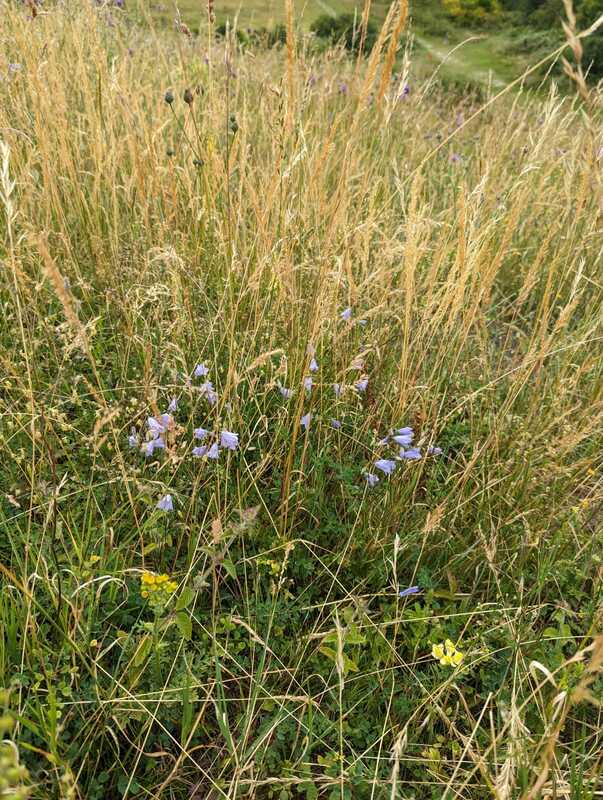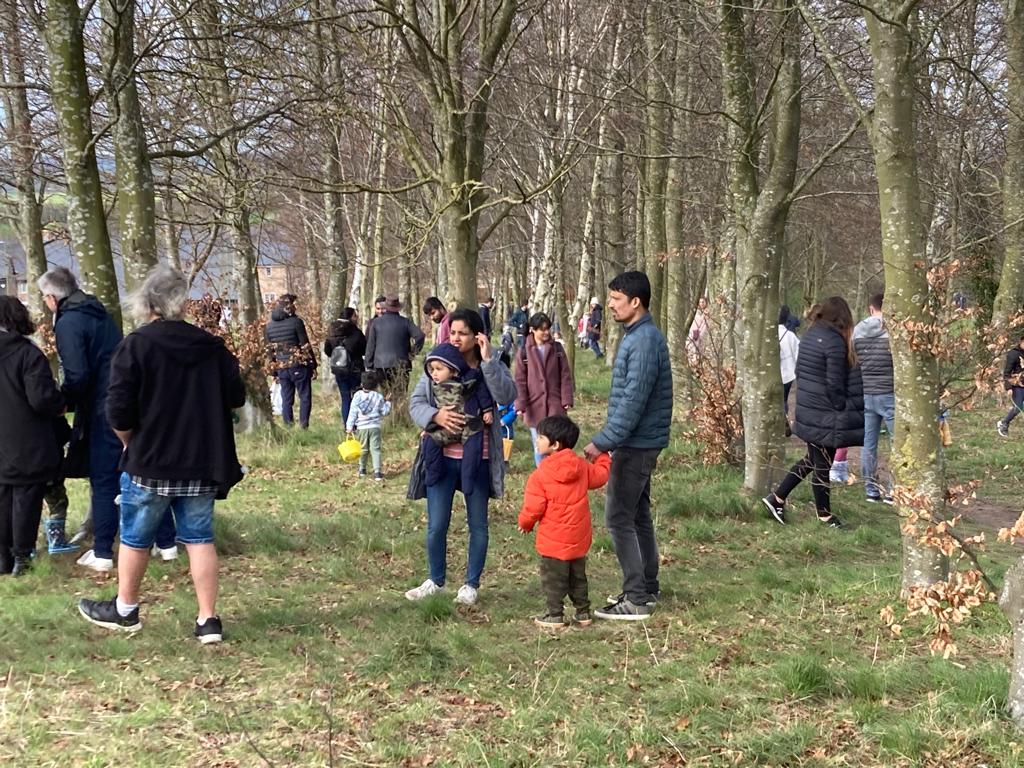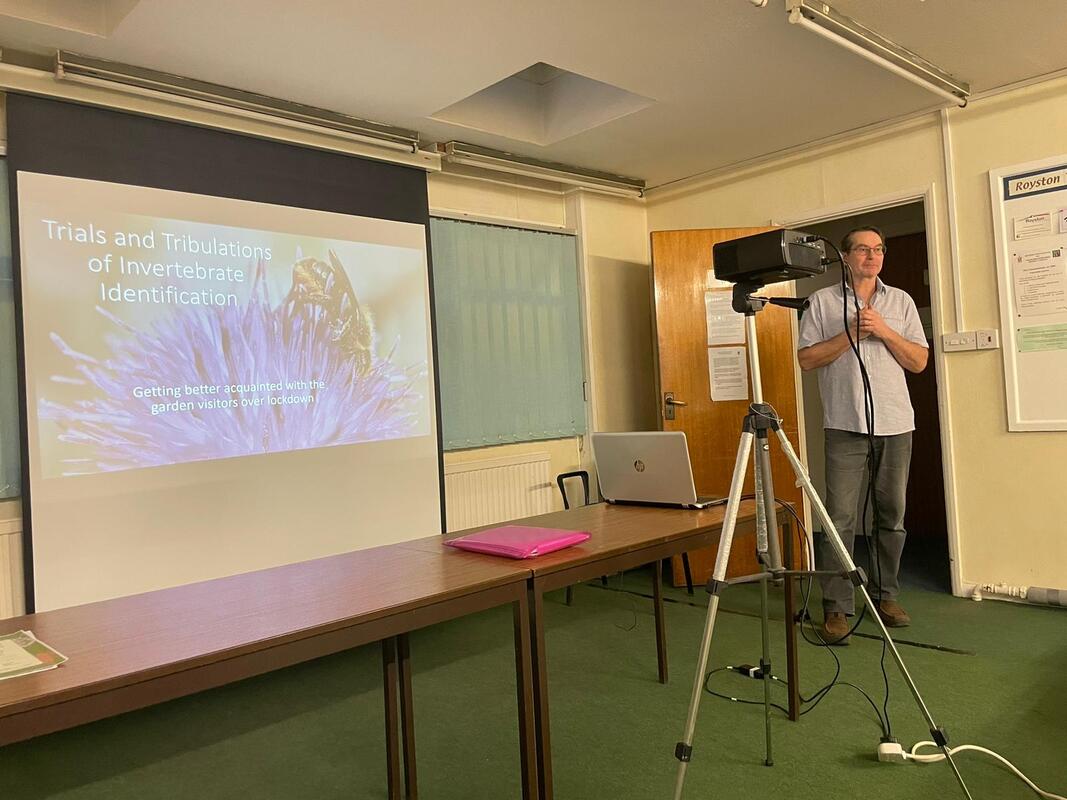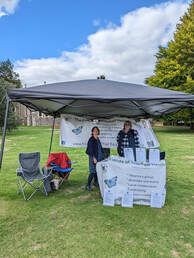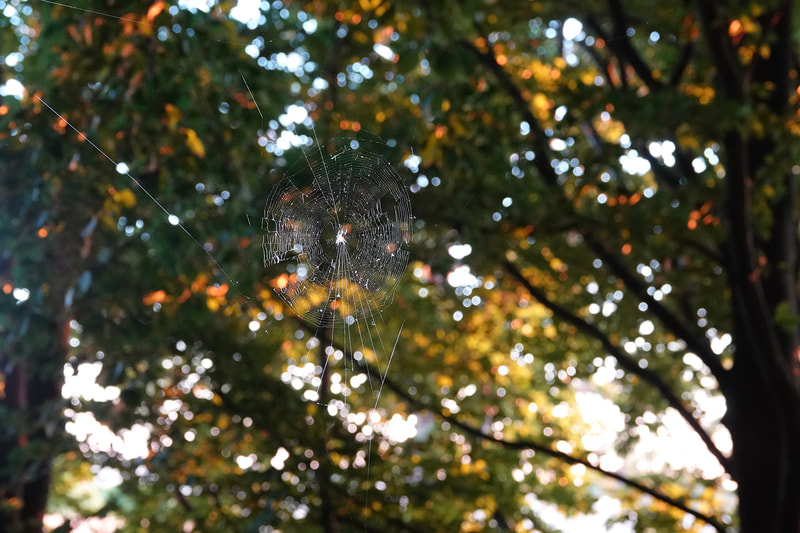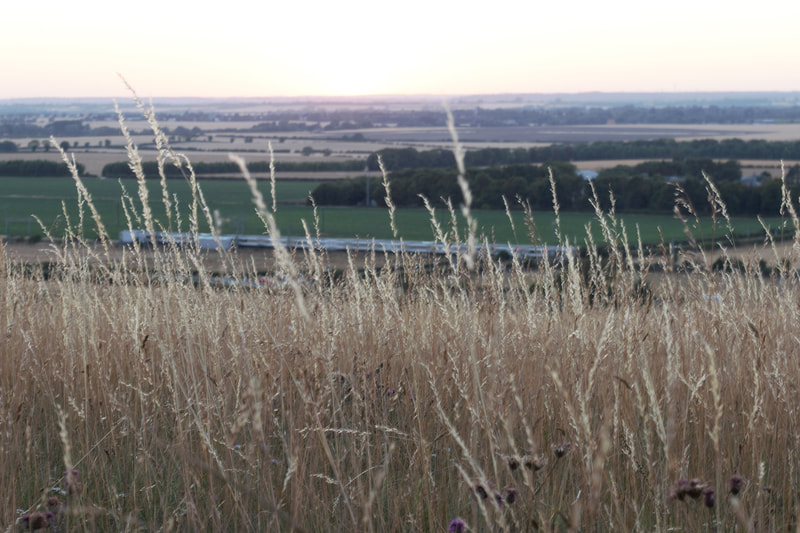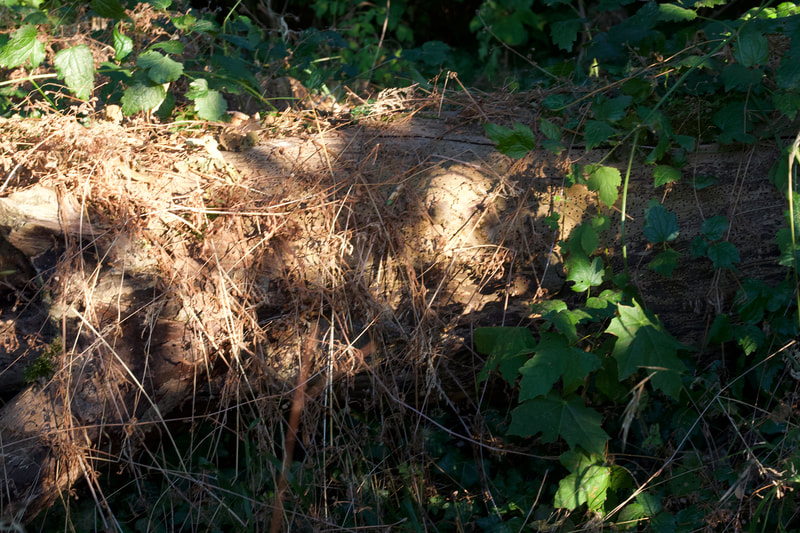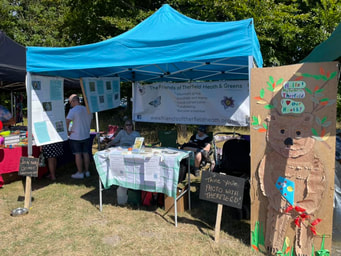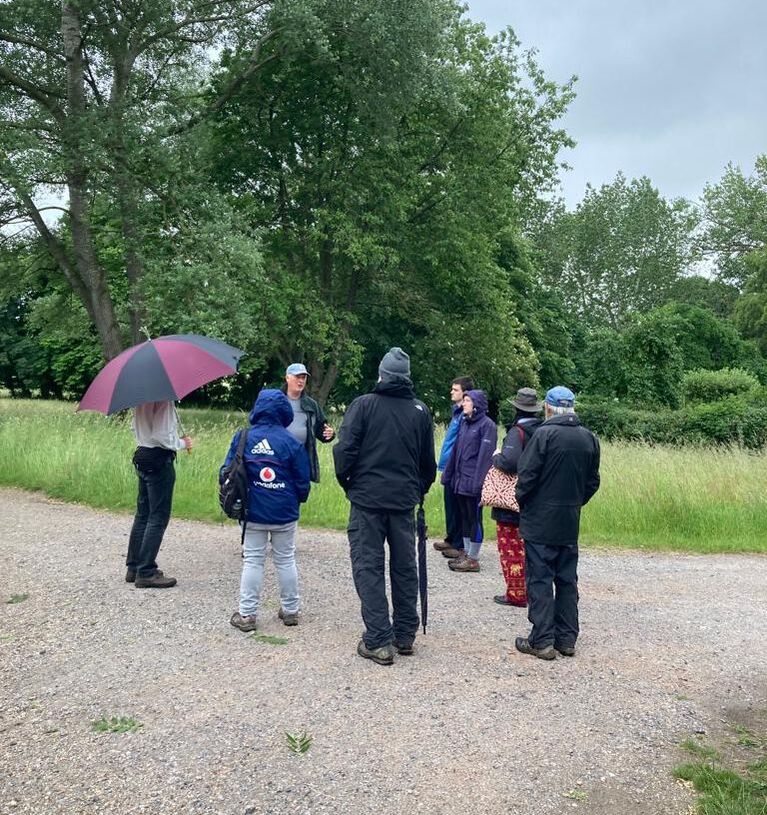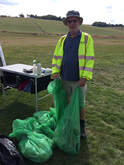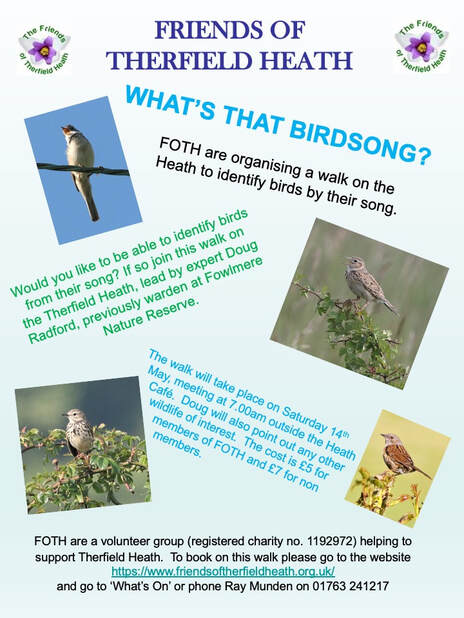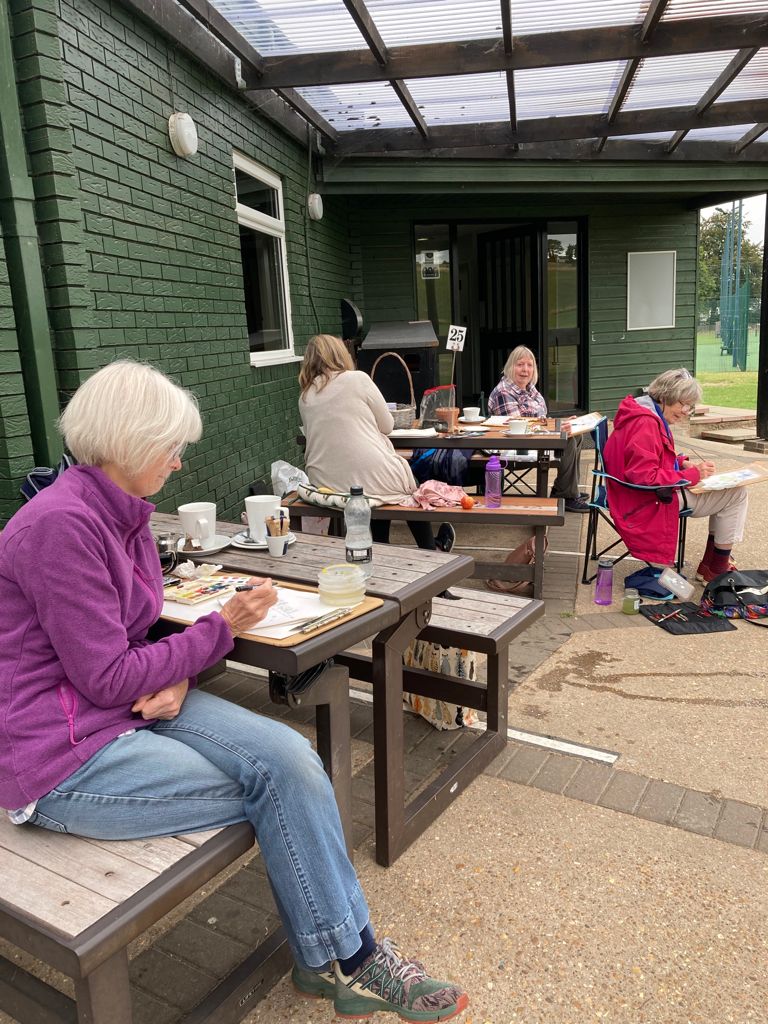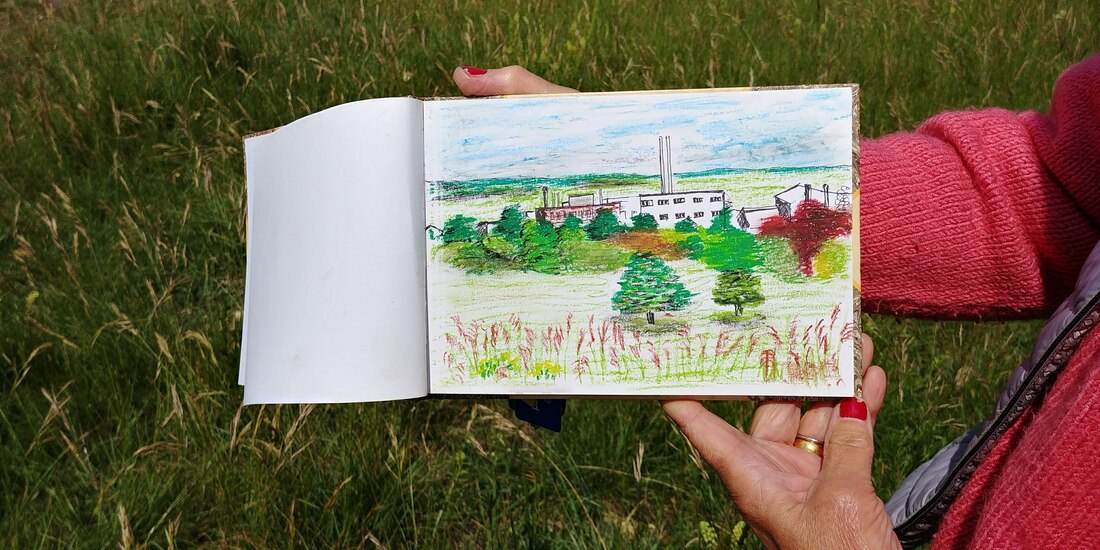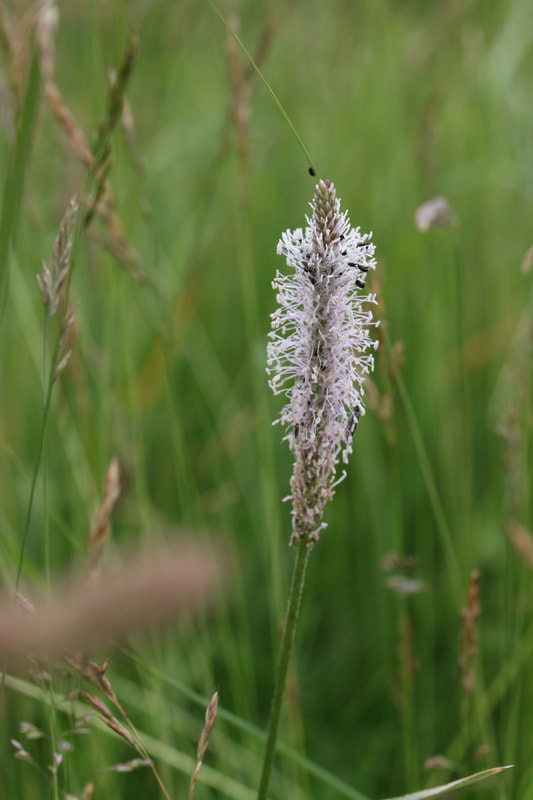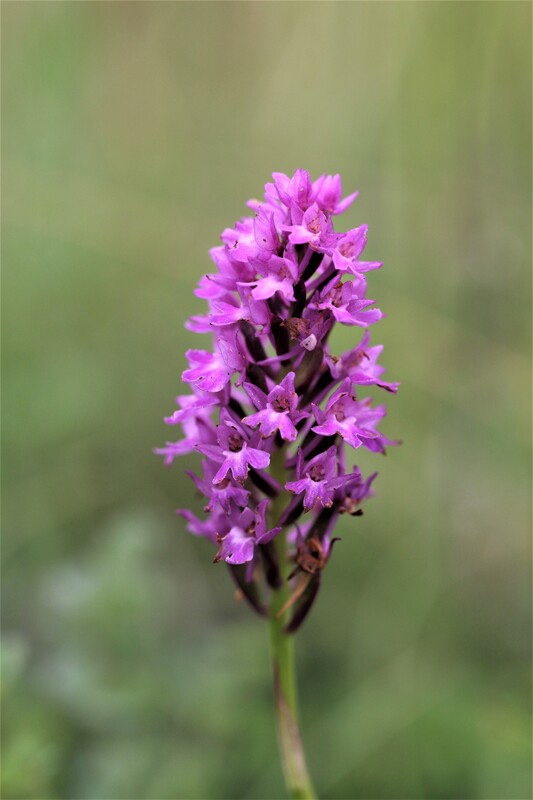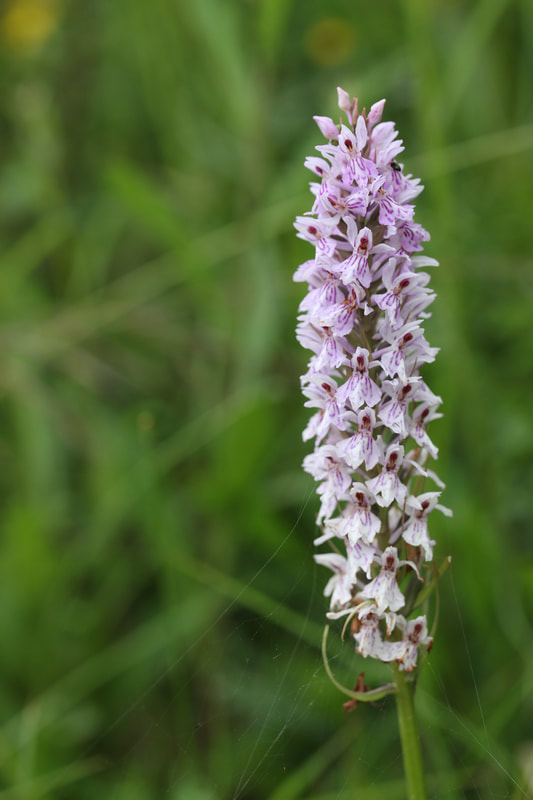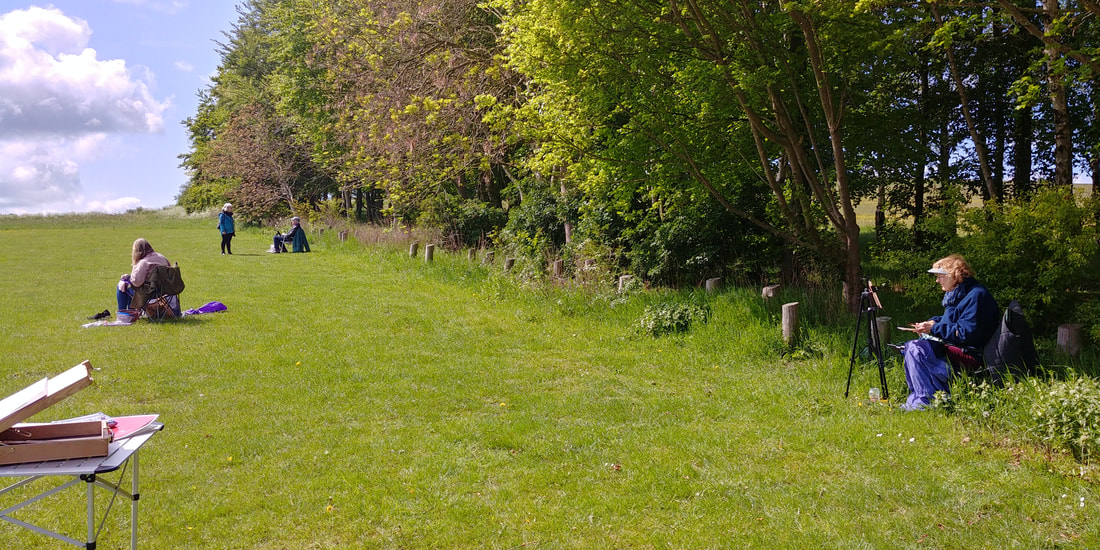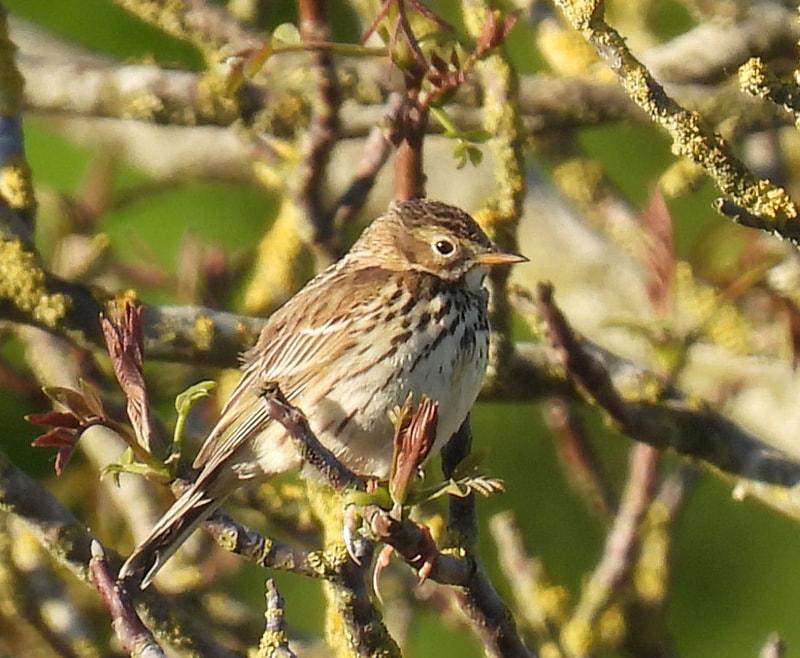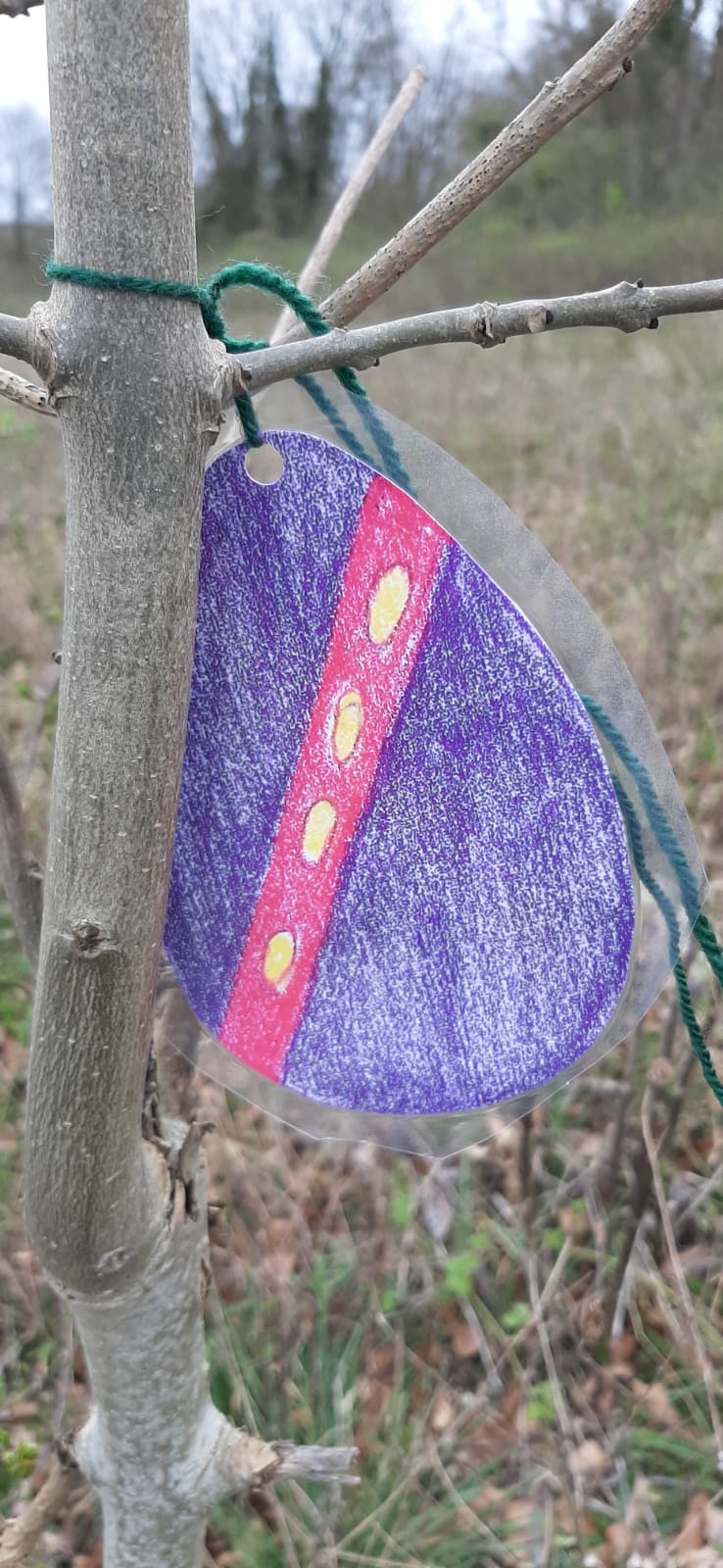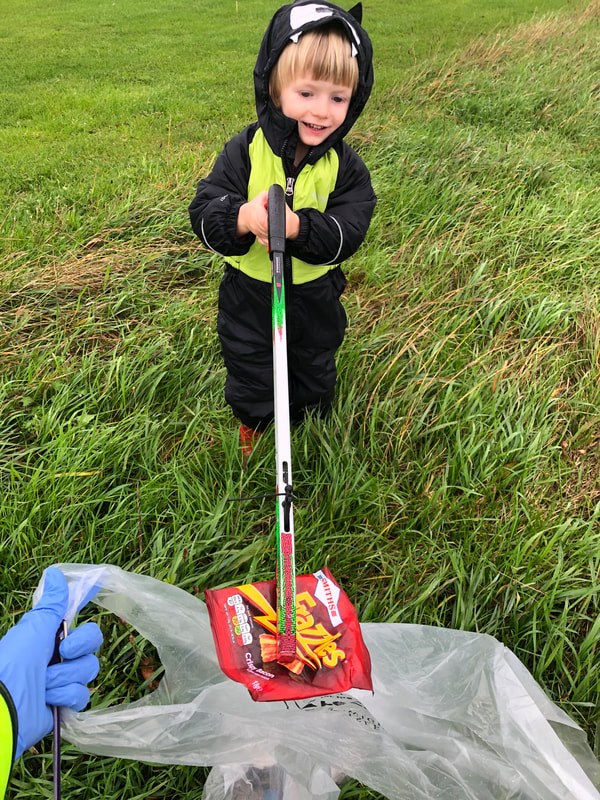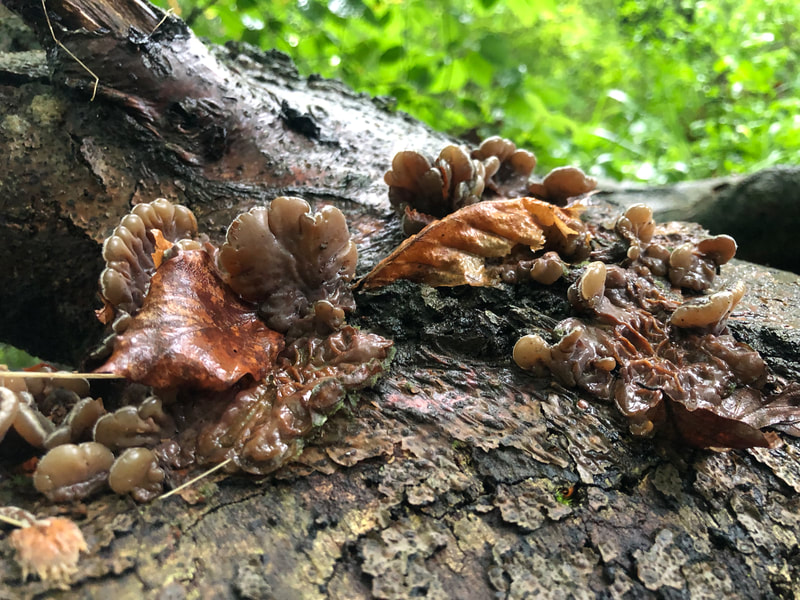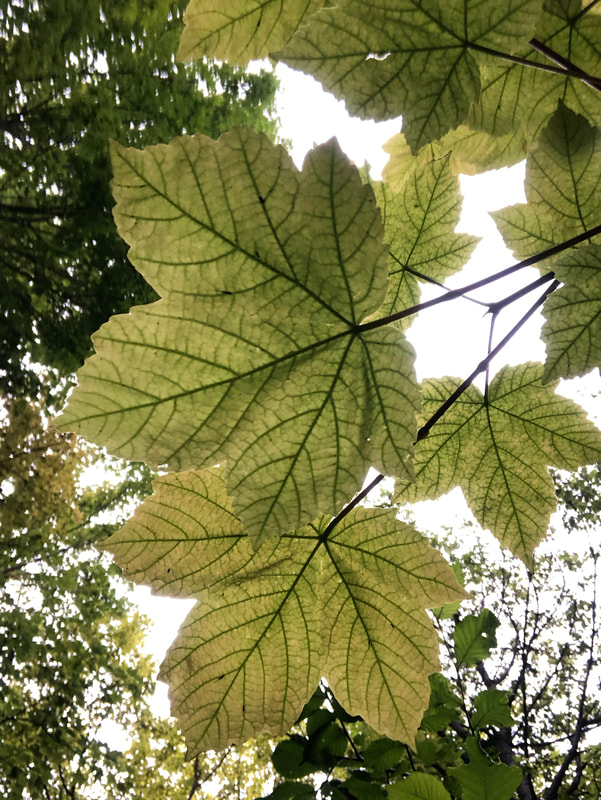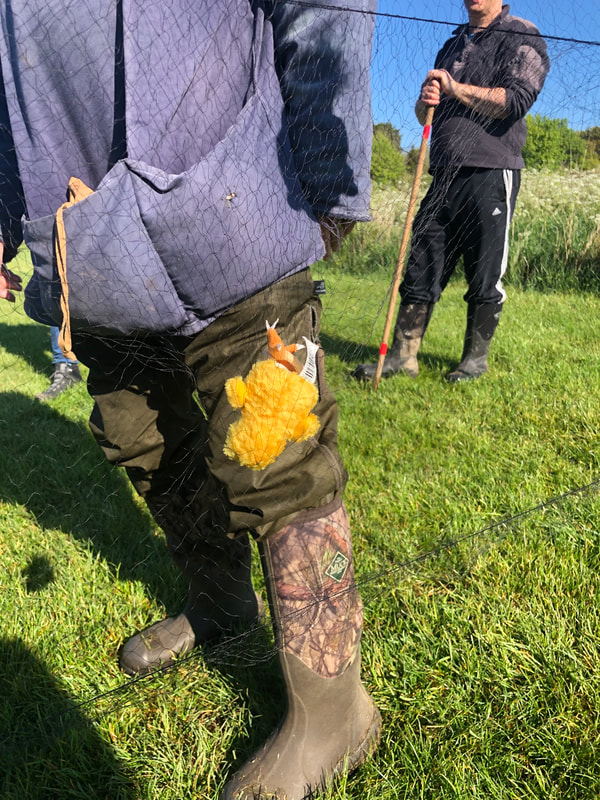This page shows past events. For our calendar of upcoming events, click 'what's on' on the menu above. For information about recent Plein Air events, visit our Plein Air page.
Past events by Friends of Therfield Heath
Thai meal - June 2024
In June supporters of FOTH&G congregated in the wonderful Thai Rack restaurant in anticipation of a nice meal and were not disappointed. All enjoyed consuming a delicious two course, good value meal alongside plenty of lively chatter to making for a great evening. While everyone had a good time, FOTH also benefited to the tune of £80.
In June supporters of FOTH&G congregated in the wonderful Thai Rack restaurant in anticipation of a nice meal and were not disappointed. All enjoyed consuming a delicious two course, good value meal alongside plenty of lively chatter to making for a great evening. While everyone had a good time, FOTH also benefited to the tune of £80.
|
Yoga on the Heath - Friday 21 June 2024.
Under perfect weather conditions, we gathered to celebrate the Summer Solstice with yoga, hosted by the Friends of Therfield Heath in collaboration with Yoga with Aline. With the vast skies above and the earth beneath us, we moved mindfully, grounding ourselves in the soothing energy of the Heath while opening up to the expansiveness around us and basking in the sun's warmth. This outdoor yoga session offered a profound way to connect with nature and appreciate the beauty of Therfield Heath. The event was a wonderful blend of tranquillity and rejuvenation, making it a memorable experience for all who attended. |
Yoga on the Heath - Wednesday 20 March 2024.
Despite the mild, yet overcast weather, a dozen of us gathered to celebrate the Spring Solstice through yoga. The earlier rain in the day enhanced the intoxicating scent of the Heath as Aline guided us through a practice that was both energising and relaxing. As we approached the conclusion, the clouds parted, revealing a glorious sunset that accompanied the final Shavasana pose. Many thanks to Aline for these special yoga sessions, which have become a regular Solstice tradition, offering us a unique way to connect with the Heath. We look forward to welcoming the Summer Solstice on Thursday, 20th June at 6 pm – mark your calendars!
Despite the mild, yet overcast weather, a dozen of us gathered to celebrate the Spring Solstice through yoga. The earlier rain in the day enhanced the intoxicating scent of the Heath as Aline guided us through a practice that was both energising and relaxing. As we approached the conclusion, the clouds parted, revealing a glorious sunset that accompanied the final Shavasana pose. Many thanks to Aline for these special yoga sessions, which have become a regular Solstice tradition, offering us a unique way to connect with the Heath. We look forward to welcoming the Summer Solstice on Thursday, 20th June at 6 pm – mark your calendars!
Wildlife of the Atlantic Islands, Doug Radford. Tuesday 27 February 2024.
Friends Lecture Series x Royston Wildlife Group 2023/2024 Season
It isn’t always necessary to join a cruise dedicated to wildlife and bird watching to have an amazing holiday exploring interesting islands and checking off your ‘must see’ bird list. In 2017 Doug Radford, former warden of RSPB Fowlmere, joined a Hurtigruten cruise with an itinerary of the Canary Islands, Madeira, and the Azores. At 638 berths the ship managed to have an intimate feel, the food was very good, and the large windows in the lounges gave excellent views. The entrance to his cabin even had a picture of a Puffin on the carpet, with a trail of little Puffins leading him inside, but Doug was surprised to find that these were the only auks seen on the trip.
Doug chose this cruise as it travelled in late September and early October, a time in which he hoped to see plenty of migratory birds. The weather was good, enabling him to spend most of his time outside on the deck watching as the birds flew past. The cruise started in Casablanca and its first port of call was Santa Cruz de Tenerife in the Canary Islands. On the way, Doug noticed that a Willow Warbler had landed on the ship, sheltering from the wind, and getting a free ride. His routine was to walk around the ship every morning looking for bird passengers. His photographs showed a Reed Warbler and two airborne Turtle Doves, and he also saw a Redstart and a Grasshopper Warbler.
The cruise entertainment included interesting talks in its lecture theatre. One lecturer was the grandson of Thor Heyerdahl of Kon-Tiki expedition fame, speaking of his maritime career. Doug was particularly moved by another dramatic talk about plastic in the oceans. Spending so much time on deck, Doug was able to photograph Striped Dolphins and Short-finned Pilot Whales, Cory’s Shearwaters, and an adult Pomarine Skua identified by its spoon-shaped tail feathers.
On reaching Tenerife, the other passengers climbed aboard coaches to tour the island, while Doug explored the parks and gardens of the city. He was very pleased to be able to tick Canary Islands Chiffchaff almost immediately, particularly as it was singing. Although the streams running through the city were dry there were enough puddles for many frogs to survive in, and Doug saw a Grey Wagtail with its yellow breast. He also saw some Monarch butterflies, now established in the islands from the original vagrants from the west coast of the USA. When Doug returned to the coast he spotted a raft of Manx Shearwaters on migration.
The next stop was San Sebastian de la Gomera. Here Doug again planned his own walk, taking a bus up into the hills and then walking back down on dry rocky paths through the dramatic landscape scattered with cacti. He saw Canaries (another tick), although not close enough to be photographed, and lots of fish in the harbour. The ship then moved on to Madeira. This part of the voyage proved particularly productive, giving close views of five Sperm Whales gathered on the surface, a rare South Polar Skua, and a Great White Egret that may have flown all the way from America.
The ship moored at Funchal on the main island of Madeira, where Doug saw lots of Common Terns in winter plumage and a first-winter Mediterranean Gull. The second Madeiran island to be visited was the much smaller Porto Santo. Doug’s target was a small reservoir named Tanque; being the largest body of water on the island, it naturally attracts lots of water birds. Along with the more familiar Ringed Plover and Wood Sandpiper, Doug was able to get very close to a Lesser Yellowlegs from America, the subject of the best photographs in the presentation. Close views were also obtained of a Spectacled Warbler and a Berthelot’s Pipit, while a flock of Spoonbills flew overhead.
Back onboard, about 500 Cory’s Shearwaters gathered around the ship in the evening. The cruise continued to the Azores, where the islands of Terceira, Faial and Sao Miguel were visited. Doug took a taxi to Cabo da Praia on Terceira, a flooded quarry famous for attracting ‘more American shorebirds than any other site on the eastern side of the Atlantic’. A wide range of waders were seen, including four Semipalmated Plovers from America, and the audience was able to see the web between two toes on one of Doug’s photographs. Walks around the other islands showed beautiful landscapes.
Back at sea, Doug was very pleased to see a Great Shearwater through the window of the restaurant. This was another lifer, having eluded him through several decades of sea-watching on British and Irish coasts. During the final part of the cruise to Lisbon, Portugal, Doug saw more dolphins and Mediterranean Gulls. The talk ended with Doug answering questions and stating that his camera was a Canon EOS 7D Mk11 with a 100-400mm lens.
Friends Lecture Series x Royston Wildlife Group 2023/2024 Season
It isn’t always necessary to join a cruise dedicated to wildlife and bird watching to have an amazing holiday exploring interesting islands and checking off your ‘must see’ bird list. In 2017 Doug Radford, former warden of RSPB Fowlmere, joined a Hurtigruten cruise with an itinerary of the Canary Islands, Madeira, and the Azores. At 638 berths the ship managed to have an intimate feel, the food was very good, and the large windows in the lounges gave excellent views. The entrance to his cabin even had a picture of a Puffin on the carpet, with a trail of little Puffins leading him inside, but Doug was surprised to find that these were the only auks seen on the trip.
Doug chose this cruise as it travelled in late September and early October, a time in which he hoped to see plenty of migratory birds. The weather was good, enabling him to spend most of his time outside on the deck watching as the birds flew past. The cruise started in Casablanca and its first port of call was Santa Cruz de Tenerife in the Canary Islands. On the way, Doug noticed that a Willow Warbler had landed on the ship, sheltering from the wind, and getting a free ride. His routine was to walk around the ship every morning looking for bird passengers. His photographs showed a Reed Warbler and two airborne Turtle Doves, and he also saw a Redstart and a Grasshopper Warbler.
The cruise entertainment included interesting talks in its lecture theatre. One lecturer was the grandson of Thor Heyerdahl of Kon-Tiki expedition fame, speaking of his maritime career. Doug was particularly moved by another dramatic talk about plastic in the oceans. Spending so much time on deck, Doug was able to photograph Striped Dolphins and Short-finned Pilot Whales, Cory’s Shearwaters, and an adult Pomarine Skua identified by its spoon-shaped tail feathers.
On reaching Tenerife, the other passengers climbed aboard coaches to tour the island, while Doug explored the parks and gardens of the city. He was very pleased to be able to tick Canary Islands Chiffchaff almost immediately, particularly as it was singing. Although the streams running through the city were dry there were enough puddles for many frogs to survive in, and Doug saw a Grey Wagtail with its yellow breast. He also saw some Monarch butterflies, now established in the islands from the original vagrants from the west coast of the USA. When Doug returned to the coast he spotted a raft of Manx Shearwaters on migration.
The next stop was San Sebastian de la Gomera. Here Doug again planned his own walk, taking a bus up into the hills and then walking back down on dry rocky paths through the dramatic landscape scattered with cacti. He saw Canaries (another tick), although not close enough to be photographed, and lots of fish in the harbour. The ship then moved on to Madeira. This part of the voyage proved particularly productive, giving close views of five Sperm Whales gathered on the surface, a rare South Polar Skua, and a Great White Egret that may have flown all the way from America.
The ship moored at Funchal on the main island of Madeira, where Doug saw lots of Common Terns in winter plumage and a first-winter Mediterranean Gull. The second Madeiran island to be visited was the much smaller Porto Santo. Doug’s target was a small reservoir named Tanque; being the largest body of water on the island, it naturally attracts lots of water birds. Along with the more familiar Ringed Plover and Wood Sandpiper, Doug was able to get very close to a Lesser Yellowlegs from America, the subject of the best photographs in the presentation. Close views were also obtained of a Spectacled Warbler and a Berthelot’s Pipit, while a flock of Spoonbills flew overhead.
Back onboard, about 500 Cory’s Shearwaters gathered around the ship in the evening. The cruise continued to the Azores, where the islands of Terceira, Faial and Sao Miguel were visited. Doug took a taxi to Cabo da Praia on Terceira, a flooded quarry famous for attracting ‘more American shorebirds than any other site on the eastern side of the Atlantic’. A wide range of waders were seen, including four Semipalmated Plovers from America, and the audience was able to see the web between two toes on one of Doug’s photographs. Walks around the other islands showed beautiful landscapes.
Back at sea, Doug was very pleased to see a Great Shearwater through the window of the restaurant. This was another lifer, having eluded him through several decades of sea-watching on British and Irish coasts. During the final part of the cruise to Lisbon, Portugal, Doug saw more dolphins and Mediterranean Gulls. The talk ended with Doug answering questions and stating that his camera was a Canon EOS 7D Mk11 with a 100-400mm lens.
Winter in Japan, Martin Johnson. Tuesday 30 January 2024.
Friends Lecture Series x Royston Wildlife Group 2023/2024 Season
Having a holiday in Japan during the winter months with temperatures below freezing may not be everyone’s idea of fun, but that is exactly what Martin Johnson did a year ago. Covid restrictions had just been relaxed, but he still had to have appropriate documentation, which was checked. Masks had to be worn indoors and sometimes outside as well. Martin and the rest of the group, along with a guide and interpreter, started their trip in Tokyo where the temperature was a mild 13/14°C, and the trees in the Imperial Palace gardens were just coming into flower. Martin illustrated his talk with beautiful photographs throughout. In Tokyo, he saw Great White Egrets, which are more common in Hertfordshire these days, Eurasian Sparrow Hawks, the large-billed Crow, the Japanese White Eye, and the Japanese Pygmy Woodpecker amongst others.
After a short stay in Tokyo, Martin moved north to the island of Hokkaido where the temperature was 0°C in the daytime and down to minus 20°C at night. Here there was snow on the mountains and it lay thickly on the ground. There is some volcanic activity in the area, and an icy lake was partly unfrozen with hot springs bubbling up on one side. Hooper swans were taking advantage of the warm water. At one point, it started to snow, but that didn’t stop the Sika deer, the commonest deer in Japan, from browsing amongst the trees as Martin’s atmospheric photos showed. The snow ploughs were out very early so the group were up and out early as well to go bird watching. They were taken to a feeding site for Red Crowned Cranes. These cranes were almost made extinct in the last century due to hunting. However, a group of about 20 were found, and strict rules banning the hunting of these birds were put in place. About 1900 red-crowned cranes exist in Japan today, around 3,000 worldwide. The black and white cranes looked impressive against the snowy background although the amount of red on them is minimal in winter. Martin was able to spend time watching these balletic adult birds gracefully take off and land, whilst their young birds were very ungainly and looked quite funny in the photographs. These cranes have become too reliant on the feeding stations, so the amount of food available is being reduced yearly. A swan tried to join them and take advantage of the food; however, it was shooed away as there is bird flu in the Hooper Swan population at the moment.
The group moved further up Hokkaido to Rausu on the northern coast. Martin was able to capture photos of Ural Owls, Eurasian Nuthatch, Slaty Backed Gulls with bright bubblegum pink legs, a male Goosander and a Black Kite eating a fish as it flew. An evening excursion to a combined Café/hide gave the group an unusual opportunity. Strobe lighting had been set up, and the photographers were given the correct settings enabling them to take excellent photos. A pond containing fish had been constructed in the snowy area. This attracted a very large Blakiston’s Fish Owl, which landed on the edge of the pond, jumped in, and came out with a fish. A pair of these fabulous owls were seen later in a bush. A boat trip (the temperature was minus 14°C!) showed the group Harlequin Ducks, Whitetail Eagles and the Steller’s Sea Eagle with its enormous yellow-coloured bill and talons. Back on land, the eagles would land on the seawall hoping people would supply them with fish. Martin was able to get great close-ups of both types of eagle. The group then moved onto the top of the peninsula to watch sea lions, Black Scoters duck, Black Tailed Eagles, pretty Asian Rosy Finches, a red fox and more Sika deer. Whilst in the warmth of the hotel, Martin was able to watch a Blakiston’s Fish Owl appear and eat a trout that it had caught. Other birds spotted on this part of the trip were Marsh Tit, Japanese Tit, Greater Spotted Woodpecker- the same as we have in the UK, and the Eurasian Jay. The group even had time to fit in a snowball fight.
The final part of the trip meant a ride on the famous bullet train to visit the Japanese Macaque monkeys, more commonly called the Snow Monkeys. These monkeys live in a climate where snow covers the ground for months each year. The monkeys are famous for bathing together in the hot springs. Martin finished his talk with a short video, to the delight of the audience, of a snow monkey with a very expressive face, lazing in a warm pool, not at all disturbed by the onlookers.
Friends Lecture Series x Royston Wildlife Group 2023/2024 Season
Having a holiday in Japan during the winter months with temperatures below freezing may not be everyone’s idea of fun, but that is exactly what Martin Johnson did a year ago. Covid restrictions had just been relaxed, but he still had to have appropriate documentation, which was checked. Masks had to be worn indoors and sometimes outside as well. Martin and the rest of the group, along with a guide and interpreter, started their trip in Tokyo where the temperature was a mild 13/14°C, and the trees in the Imperial Palace gardens were just coming into flower. Martin illustrated his talk with beautiful photographs throughout. In Tokyo, he saw Great White Egrets, which are more common in Hertfordshire these days, Eurasian Sparrow Hawks, the large-billed Crow, the Japanese White Eye, and the Japanese Pygmy Woodpecker amongst others.
After a short stay in Tokyo, Martin moved north to the island of Hokkaido where the temperature was 0°C in the daytime and down to minus 20°C at night. Here there was snow on the mountains and it lay thickly on the ground. There is some volcanic activity in the area, and an icy lake was partly unfrozen with hot springs bubbling up on one side. Hooper swans were taking advantage of the warm water. At one point, it started to snow, but that didn’t stop the Sika deer, the commonest deer in Japan, from browsing amongst the trees as Martin’s atmospheric photos showed. The snow ploughs were out very early so the group were up and out early as well to go bird watching. They were taken to a feeding site for Red Crowned Cranes. These cranes were almost made extinct in the last century due to hunting. However, a group of about 20 were found, and strict rules banning the hunting of these birds were put in place. About 1900 red-crowned cranes exist in Japan today, around 3,000 worldwide. The black and white cranes looked impressive against the snowy background although the amount of red on them is minimal in winter. Martin was able to spend time watching these balletic adult birds gracefully take off and land, whilst their young birds were very ungainly and looked quite funny in the photographs. These cranes have become too reliant on the feeding stations, so the amount of food available is being reduced yearly. A swan tried to join them and take advantage of the food; however, it was shooed away as there is bird flu in the Hooper Swan population at the moment.
The group moved further up Hokkaido to Rausu on the northern coast. Martin was able to capture photos of Ural Owls, Eurasian Nuthatch, Slaty Backed Gulls with bright bubblegum pink legs, a male Goosander and a Black Kite eating a fish as it flew. An evening excursion to a combined Café/hide gave the group an unusual opportunity. Strobe lighting had been set up, and the photographers were given the correct settings enabling them to take excellent photos. A pond containing fish had been constructed in the snowy area. This attracted a very large Blakiston’s Fish Owl, which landed on the edge of the pond, jumped in, and came out with a fish. A pair of these fabulous owls were seen later in a bush. A boat trip (the temperature was minus 14°C!) showed the group Harlequin Ducks, Whitetail Eagles and the Steller’s Sea Eagle with its enormous yellow-coloured bill and talons. Back on land, the eagles would land on the seawall hoping people would supply them with fish. Martin was able to get great close-ups of both types of eagle. The group then moved onto the top of the peninsula to watch sea lions, Black Scoters duck, Black Tailed Eagles, pretty Asian Rosy Finches, a red fox and more Sika deer. Whilst in the warmth of the hotel, Martin was able to watch a Blakiston’s Fish Owl appear and eat a trout that it had caught. Other birds spotted on this part of the trip were Marsh Tit, Japanese Tit, Greater Spotted Woodpecker- the same as we have in the UK, and the Eurasian Jay. The group even had time to fit in a snowball fight.
The final part of the trip meant a ride on the famous bullet train to visit the Japanese Macaque monkeys, more commonly called the Snow Monkeys. These monkeys live in a climate where snow covers the ground for months each year. The monkeys are famous for bathing together in the hot springs. Martin finished his talk with a short video, to the delight of the audience, of a snow monkey with a very expressive face, lazing in a warm pool, not at all disturbed by the onlookers.
A Bit About Badger – Tuesday 28 November 2023
Friends Lecture Series x Royston Wildlife Group 2023/2024 Season
November's wildlife talk brought an engaging exploration into the life of one of Britain's most enigmatic creatures: the badger. Presented by Pete Butchers, a dedicated volunteer from the Hertfordshire and Middlesex Badger Group, the session was a captivating journey into the world of these elusive animals.
Pete's talk was a treasure trove of intriguing insights, shedding light on various aspects of badger life. From their preferences and habits to the challenges they face, the audience was immersed in a world previously unseen. Badgers, while widespread across the country, exhibit varied concentrations, steering clear of terrains like the granite of Northern Scotland and the moisture of the fens, though they ingeniously find suitable habitats regardless. These adaptable creatures can thrive in both urban and rural landscapes, yet they prefer a blend of terrains—a mosaic of pasture, hedgerows, woodland, and undulating land akin to the landscape found in Hertfordshire.
Did you know a group of badgers is called a Clan? These clans can range from a cosy pair to a sizable gathering of 20 members, residing in intricate underground setts. These setts, often hundreds of years old, consist of chambers interconnected by tunnels, with main setts intricately linked to subsidiary ones. Around Royston, several of these setts, approximately six in number, dot the landscape, some nestled on or near the Heath.
While badgers are protected by law under the Protection of Badgers Act 1992, they can occasionally wander onto properties, enticed by the peanuts thoughtfully left out for them by some members of the Friends of Therfield Heath. Remarkably, these visits have not resulted in any damage to gardens. Should anyone encounter an injured badger or have urgent welfare concerns, the Hertfordshire and Middlesex Badger Group is a vital resource. They can be contacted at [email protected]. In case of emergencies or sightings requiring immediate attention, the Badgerline can be reached at 07860 210414. However, caution must be exercised, as badgers possess formidable jaws and claws, and while typically avoiding human contact, they can display aggression if provoked.
In support of the admirable work carried out by the Hertfordshire and Middlesex Badger Group, the Friends generously donated £50 to aid in their continuous efforts encompassing advising, monitoring, surveying, rescuing, and conserving all things badger.
The evening was an illuminating journey into the secretive world of badgers, leaving attendees enriched with newfound knowledge and appreciation for these fascinating creatures.
Friends Lecture Series x Royston Wildlife Group 2023/2024 Season
November's wildlife talk brought an engaging exploration into the life of one of Britain's most enigmatic creatures: the badger. Presented by Pete Butchers, a dedicated volunteer from the Hertfordshire and Middlesex Badger Group, the session was a captivating journey into the world of these elusive animals.
Pete's talk was a treasure trove of intriguing insights, shedding light on various aspects of badger life. From their preferences and habits to the challenges they face, the audience was immersed in a world previously unseen. Badgers, while widespread across the country, exhibit varied concentrations, steering clear of terrains like the granite of Northern Scotland and the moisture of the fens, though they ingeniously find suitable habitats regardless. These adaptable creatures can thrive in both urban and rural landscapes, yet they prefer a blend of terrains—a mosaic of pasture, hedgerows, woodland, and undulating land akin to the landscape found in Hertfordshire.
Did you know a group of badgers is called a Clan? These clans can range from a cosy pair to a sizable gathering of 20 members, residing in intricate underground setts. These setts, often hundreds of years old, consist of chambers interconnected by tunnels, with main setts intricately linked to subsidiary ones. Around Royston, several of these setts, approximately six in number, dot the landscape, some nestled on or near the Heath.
While badgers are protected by law under the Protection of Badgers Act 1992, they can occasionally wander onto properties, enticed by the peanuts thoughtfully left out for them by some members of the Friends of Therfield Heath. Remarkably, these visits have not resulted in any damage to gardens. Should anyone encounter an injured badger or have urgent welfare concerns, the Hertfordshire and Middlesex Badger Group is a vital resource. They can be contacted at [email protected]. In case of emergencies or sightings requiring immediate attention, the Badgerline can be reached at 07860 210414. However, caution must be exercised, as badgers possess formidable jaws and claws, and while typically avoiding human contact, they can display aggression if provoked.
In support of the admirable work carried out by the Hertfordshire and Middlesex Badger Group, the Friends generously donated £50 to aid in their continuous efforts encompassing advising, monitoring, surveying, rescuing, and conserving all things badger.
The evening was an illuminating journey into the secretive world of badgers, leaving attendees enriched with newfound knowledge and appreciation for these fascinating creatures.
From There to Here - A Wildlife Photographer's Journey, Keith Gypps. Tuesday 26 September 2023.
Friends Lecture Series x Royston Wildlife Group 2023/2024 Season
Award-winning photographer Keith Gypps gave the first of this season’s wildlife talks. The evening started with Don Shewan of the Royston Wildlife Group (RWG) thanking The Friends for their support and help with publicity for these events. The sizeable audience was a mix of RWG members, FOTH members, and local photographers. Keith talked about his background – he is a Roystonian – and how his love of the countryside and nature developed as a child when he had access to the grounds of Burloes estate. He became interested in photography in 2009. Keith started by showing some of his early pictures and explaining what was wrong with them. Over time his technique improved, he learnt from professional photographers and bought better cameras. He then showed the audience some comparison shots and explained a few technical details e.g. catching light in the eyes and how clever cropping can enhance the subject. Keith also explained the process of becoming an Associate of the Royal Photographic Society. Always looking to increase his portfolio, Keith’s latest interest is slime moulds. Living on rotten wood and leaves, slime moulds are about 1.5mm to 2mm high. The audience saw a vast array of beautiful photos including those of deer, foxes, owls, herons, kingfishers, bitterns, a sandpiper feeding her young, a bee-eater feeding on a grub and a hoopoe with a mole cricket. Keith has travelled abroad and throughout the UK, always taking the time and patience to capture the local wildlife wherever he is. However, many of his superb photographs are taken locally, in and around Fowlmere and on Therfield Heath.
Friends Lecture Series x Royston Wildlife Group 2023/2024 Season
Award-winning photographer Keith Gypps gave the first of this season’s wildlife talks. The evening started with Don Shewan of the Royston Wildlife Group (RWG) thanking The Friends for their support and help with publicity for these events. The sizeable audience was a mix of RWG members, FOTH members, and local photographers. Keith talked about his background – he is a Roystonian – and how his love of the countryside and nature developed as a child when he had access to the grounds of Burloes estate. He became interested in photography in 2009. Keith started by showing some of his early pictures and explaining what was wrong with them. Over time his technique improved, he learnt from professional photographers and bought better cameras. He then showed the audience some comparison shots and explained a few technical details e.g. catching light in the eyes and how clever cropping can enhance the subject. Keith also explained the process of becoming an Associate of the Royal Photographic Society. Always looking to increase his portfolio, Keith’s latest interest is slime moulds. Living on rotten wood and leaves, slime moulds are about 1.5mm to 2mm high. The audience saw a vast array of beautiful photos including those of deer, foxes, owls, herons, kingfishers, bitterns, a sandpiper feeding her young, a bee-eater feeding on a grub and a hoopoe with a mole cricket. Keith has travelled abroad and throughout the UK, always taking the time and patience to capture the local wildlife wherever he is. However, many of his superb photographs are taken locally, in and around Fowlmere and on Therfield Heath.
Yoga on the Heath - Saturday 23 September 2023
On Saturday 23 September, Aline from "Yoga with Aline" hosted an invigorating outdoor yoga class on the Heath to celebrate the Autumn Equinox. It was a day of collective tranquillity as participants embraced a grounding yoga experience, fostering stability and balance for the upcoming Autumn season.
Aline's unwavering commitment to offering yoga in natural settings aligns with the numerous benefits of practising yoga outdoors. These sessions held at the Heath provide a serene escape into nature, allowing individuals to reconnect with themselves and embrace the evolving seasons.
On Saturday 23 September, Aline from "Yoga with Aline" hosted an invigorating outdoor yoga class on the Heath to celebrate the Autumn Equinox. It was a day of collective tranquillity as participants embraced a grounding yoga experience, fostering stability and balance for the upcoming Autumn season.
Aline's unwavering commitment to offering yoga in natural settings aligns with the numerous benefits of practising yoga outdoors. These sessions held at the Heath provide a serene escape into nature, allowing individuals to reconnect with themselves and embrace the evolving seasons.
|
Enchanting World of Bats: Bat Walk - Friday 1 September 2023
On a magical evening, under the starry sky on 1 September, a curious group of 23 adults and children embarked on an adventure to discover the mysterious residents of the Heath. Guided by none other than Chantal Helm, the Chair of the Herts and Middlesex Bat Group, this bat walk was an experience like no other. As the sun dipped below the horizon, Chantal whisked us away into the captivating realm of bats. With bat detectors in hand, we were introduced to these remarkable creatures and their unique communication. Moments later, our ears were serenaded by the enchanting chirps of Common Pipistrelles as they gracefully took flight from the towering trees above. Throughout the expedition, Chantal's expertise unfolded, revealing the intricate web of bat life and the pressing need to protect their precious habitats. |
|
Landscape Photography Course - Saturday 12 August 2023
Six keen photographers arrived promptly in front of the Heath Café to join a Landscape Photography course run by local expert photographer Peter Baker. Peter, who has been placed 8th and 5th in the Amateur Photographer of the Year competition as well as shortlisted in Landscape Photographer of the Year, started by outlining some of the key theory aspects of good landscape photography to the rapt audience. Then we were off across the Heath to see if we could put into practice some of the excellent tips provided. One was to always look behind you rather than just forwards, as different views can open up; the general importance of looking out for something that adds extra to the photo, providing a focal point; using a path or similar to draw the eye to a key subject; perhaps getting down low for a different perspective and very much more. Peter’s easygoing and informative manner led to a very successful course very much appreciated by the participants. Peter also volunteered to critique photos taken on the day, so we now eagerly await to see what we got right, and just as important and perhaps more likely, wrong! |
Wildflower Wonderland: A Journey of Colour and Discovery on the Heath - Sunday 9 July 2023
Step into the world of wildflowers on the Heath, where nature's colourful show lasts from April to August! Many people joined us on a delightful walk led by the knowledgeable Claire Beale, a Conservation Ranger at Magog Down.
As we strolled along the grassy slopes to the left of the round barrows and down the valley, Claire's expertise brought the landscape to life. Amidst the lush grasses, a stunning variety of wildflowers awaited us. Claire had thoughtfully prepared a list of 44 wildflower species that indicate the health of the lowland calcareous grassland. We were fortunate to spot 14 of them, each with its own fascinating story.
Take Agrimony, for example, with its clever "hooks" on the seed heads that hitch a ride on trousers and dogs, ensuring its seeds are dispersed far and wide. Squinancywort, a small white flower, once used in ancient times to combat throat infections. And Harebells, a delicate beauty that has become less common these days.
Then, there's Greater Knapweed, flaunting its majestic purple heads, and scented Wild Basil, adding a delightful aroma to the air. Dropwort, as its name suggests, might have been a medicinal plant in times gone by. We couldn't miss the aromatic Lady's Bedstraw, the cheerful Common Rock Rose, and the charming Birds-foot Trefoil.
Amidst the grass, we spotted the elusive Hoary Plantain and the tiny Milkworts, which would have gone unnoticed if Claire hadn't pointed them out. The delicate Salad Burnet and the early-blooming Cowslip also made appearances, showing off their distinctive seed heads.
But the surprises didn't end there! Claire pointed out some rare finds, such as Bladder Campion, Silver Weed, Wild Carrot, and the elusive Meadow Root. In fact, the presence of Meadow Root contributes to the Heath's SSSI (Site of Special Scientific Interest) status.
Claire's knowledge extended beyond the plants; she enlightened us about the fascinating world of insects and their interactions with these beautiful flowers. Different insects are drawn to different colours, with beetles showing a particular fondness for white flowers.
Throughout the walk, we had the opportunity to capture breathtaking photos and ask questions. The group's joy was amplified by the cheerful calls of chiffchaffs and the graceful sight of skylarks soaring above. And if that wasn't enough, the sight of Chalkhill Blue and Adonis Blue butterflies basking in the warm sunshine added the perfect finishing touch to our nature adventure.
The beauty of wildflowers and the secrets they hold truly came alive during this memorable walk. We left feeling enriched, grateful for the wonders of nature, and eager to explore more of the Heath's treasures in the future.
Step into the world of wildflowers on the Heath, where nature's colourful show lasts from April to August! Many people joined us on a delightful walk led by the knowledgeable Claire Beale, a Conservation Ranger at Magog Down.
As we strolled along the grassy slopes to the left of the round barrows and down the valley, Claire's expertise brought the landscape to life. Amidst the lush grasses, a stunning variety of wildflowers awaited us. Claire had thoughtfully prepared a list of 44 wildflower species that indicate the health of the lowland calcareous grassland. We were fortunate to spot 14 of them, each with its own fascinating story.
Take Agrimony, for example, with its clever "hooks" on the seed heads that hitch a ride on trousers and dogs, ensuring its seeds are dispersed far and wide. Squinancywort, a small white flower, once used in ancient times to combat throat infections. And Harebells, a delicate beauty that has become less common these days.
Then, there's Greater Knapweed, flaunting its majestic purple heads, and scented Wild Basil, adding a delightful aroma to the air. Dropwort, as its name suggests, might have been a medicinal plant in times gone by. We couldn't miss the aromatic Lady's Bedstraw, the cheerful Common Rock Rose, and the charming Birds-foot Trefoil.
Amidst the grass, we spotted the elusive Hoary Plantain and the tiny Milkworts, which would have gone unnoticed if Claire hadn't pointed them out. The delicate Salad Burnet and the early-blooming Cowslip also made appearances, showing off their distinctive seed heads.
But the surprises didn't end there! Claire pointed out some rare finds, such as Bladder Campion, Silver Weed, Wild Carrot, and the elusive Meadow Root. In fact, the presence of Meadow Root contributes to the Heath's SSSI (Site of Special Scientific Interest) status.
Claire's knowledge extended beyond the plants; she enlightened us about the fascinating world of insects and their interactions with these beautiful flowers. Different insects are drawn to different colours, with beetles showing a particular fondness for white flowers.
Throughout the walk, we had the opportunity to capture breathtaking photos and ask questions. The group's joy was amplified by the cheerful calls of chiffchaffs and the graceful sight of skylarks soaring above. And if that wasn't enough, the sight of Chalkhill Blue and Adonis Blue butterflies basking in the warm sunshine added the perfect finishing touch to our nature adventure.
The beauty of wildflowers and the secrets they hold truly came alive during this memorable walk. We left feeling enriched, grateful for the wonders of nature, and eager to explore more of the Heath's treasures in the future.
|
Yoga on the Heath - 21 June 2023
In the spirit of mindfulness and to recognise the Summer Solstice, two yoga sessions took place on the Heath. It was a collaboration between the Friends and 'Yoga with Aline'. The 6pm class quickly sold out and a second class at 7.30pm was arranged. In total, 31 people took part. 40% of the proceeds came to the Friends of Therfield Heath and Greens. Some of the participants were already attending classes by Aline, and others had never tried yoga before. No one had tried a yoga session on a sunny Therfield Heath evening before. The yoga took place on the flat ground by 'fairy wood'. The trees provided welcome shade from the very warm evening sun. This area is designated SSSI, the grass had recently been mowed prior to the Kite Festival taking place this August, and as it was already mowed the Conservators allowed the session to take place. Both classes took place in a calm and peaceful atmosphere with only the occasional walker passing by. There was time at the end of the class to relax look up at the sky and listen to the bird's song. Enthusiastic participants said "It was a unique opportunity to enjoy the Heath in a different way" and "I loved my first time doing Yoga and being on the Heath listening to the birds sing." People were asked to walk or cycle to the Heath if they could, quite a few came on their bikes, pushing them across the grass as the bylaws do not allow bicycles to be ridden on the land. A Friends member checked for litter before and after the session. |
Easter Egg Hunt - 2 April 2023
We celebrated an incredible turnout for the 2023 Easter Egg Hunt, an annual fundraising event to support the conservation and management of Therfield Heath.
Over 400 tickets were sold, meaning nearly 400 children came to the Heath to search for brightly painted stones that they could convert into chocolate or sweets.
We would like to thank Tesco Extra Royston, Bury Lane Farm, The Original Factory Shop and Naturally Happy Dogs who provided some of our prizes and enabled us to raise over £300.
The funds raised will be used to purchase equipment for the Ranger of Therfield Heath to use to maintain the Heath emission-free.
We celebrated an incredible turnout for the 2023 Easter Egg Hunt, an annual fundraising event to support the conservation and management of Therfield Heath.
Over 400 tickets were sold, meaning nearly 400 children came to the Heath to search for brightly painted stones that they could convert into chocolate or sweets.
We would like to thank Tesco Extra Royston, Bury Lane Farm, The Original Factory Shop and Naturally Happy Dogs who provided some of our prizes and enabled us to raise over £300.
The funds raised will be used to purchase equipment for the Ranger of Therfield Heath to use to maintain the Heath emission-free.
|
The Trials and Tribulations of Invertebrate Identification: Getting to Know Garden Visitors Over Lockdown - 29 March 2023
The Friends' first free-for-members event took place on Wednesday 29 March 2023. It was an evening talk given by Nick Beale who is one of the Conservation Rangers at Magog Down. Nick said "I know a bit about a lot but am in no way an expert. With the extra time that lockdown provided, I tried to record all the invertebrates in the garden and this talk is designed to help avoid the many mistakes I made and guide people to the great ID resources that the web offers, with a few good pictures along the way". |
Friends Annual Quiz - 4 February 2023
The Annual Quiz was a roaring success and fully booked at the Heath Café. We raised lots of money which will go towards providing equipment for Cat the Ranger to sustainably manage the upkeep of the Heath. A big thank you to the Heath Café and those who donated such a fabulous wide range of raffle prizes including Prep World, Tesco, Royston Picture Palace, Mia Caro, Shepreth Wildlife Park, Days Bakery, Bury Lane Farm, Jane Manlove, Sandra Ready, Cat Wright, Pam Wright and Janet Rossignol-Bubbins!
The Annual Quiz was a roaring success and fully booked at the Heath Café. We raised lots of money which will go towards providing equipment for Cat the Ranger to sustainably manage the upkeep of the Heath. A big thank you to the Heath Café and those who donated such a fabulous wide range of raffle prizes including Prep World, Tesco, Royston Picture Palace, Mia Caro, Shepreth Wildlife Park, Days Bakery, Bury Lane Farm, Jane Manlove, Sandra Ready, Cat Wright, Pam Wright and Janet Rossignol-Bubbins!
Queen's Green Canopy Tree Planting Ceremony - 14 January 2023
The Friends were delighted to be joined by the Deputy Lieutenant of Hertfordshire, Richard H Beazley MBE on Saturday 14 January for our official planting of The Queen's Green Canopy trees.
Four trees have been planted as a living legacy to honour Her Majesty. Two hornbeams, an elm and silver birch were planted to mark the occasion.
The Queen's Green Canopy is a living legacy with over a million trees planted in Her Majesty's name across the nation. It also serves as a lasting tribute to Her Majesty's extraordinary service.
The friends are delighted to have been able to contribute to this initiative. We were joined on the day by representatives from the Conservators, Therfield Heath Ranger and the team from Shire Trees Limited who generously planted the trees for free.
The Friends were delighted to be joined by the Deputy Lieutenant of Hertfordshire, Richard H Beazley MBE on Saturday 14 January for our official planting of The Queen's Green Canopy trees.
Four trees have been planted as a living legacy to honour Her Majesty. Two hornbeams, an elm and silver birch were planted to mark the occasion.
The Queen's Green Canopy is a living legacy with over a million trees planted in Her Majesty's name across the nation. It also serves as a lasting tribute to Her Majesty's extraordinary service.
The friends are delighted to have been able to contribute to this initiative. We were joined on the day by representatives from the Conservators, Therfield Heath Ranger and the team from Shire Trees Limited who generously planted the trees for free.
|
Sustain-ability - 2 October 2022
The Friends joined the Sustain-ability event in Priory Gardens Royston. The event was set up by the Royston Environmental Group which encouraged local and regional organisations to take part, showing how they each contributed to sustaining the environment. The Friends promoted Therfield Heath which meets 5 of the 17 sustainable development goals (SDGs) set by the United Nations in 2015. Information handouts were prepared, on recycled paper and handy bookmark size, listing the goals and explaining how important it is to conserve the natural nature of the Heath. It was an opportunity for the committee to meet both members and non-members and find out how people use the Heath and their local environment. The full list of sustainable development goals can be viewed on the Conservation page on this website. |
Bat Walk - 9 September 2022
21 adults, 8 children, 1 baby and a very well-behaved dog joined the Bat Walk in September. Chantal from the Herts and Middlesex Bat Group gave a fascinating talk on bats, their behaviour and how bats are important to the environment. Chantal demonstrated how to use the bat detectors and what to listen for. After sunset, we set off walking over the Heath to find those bats by listening to the chirps and squeaks coming from the detectors held aloft in our hands. Afterwards, Chantal gave advice to two Committee members on the preferred positioning of the new Bat Boxes that will go up soon. The event raised £178, which will be split between the Friends and the Herts and Middlesex Bat Group.
21 adults, 8 children, 1 baby and a very well-behaved dog joined the Bat Walk in September. Chantal from the Herts and Middlesex Bat Group gave a fascinating talk on bats, their behaviour and how bats are important to the environment. Chantal demonstrated how to use the bat detectors and what to listen for. After sunset, we set off walking over the Heath to find those bats by listening to the chirps and squeaks coming from the detectors held aloft in our hands. Afterwards, Chantal gave advice to two Committee members on the preferred positioning of the new Bat Boxes that will go up soon. The event raised £178, which will be split between the Friends and the Herts and Middlesex Bat Group.
Photography Course - 10 August 2022
The August photography course took place early evening on a week day. Five people gathered on the Heath to benefit from the excellent tutelage of local expert photographers, Keith Truman and Peter North. First there was a tutorial on how setting aperture, shutter speed and ISO numbers interact to affect depth of field, sharpness, exposure and how to apply them to stationary and moving objects. This was followed by practical sessions on the Heath during which the importance of looking out interesting subjects and lighting patterns were covered. All the participants found the course beneficial and complimented Keith and Peter on their coaching skills.
The August photography course took place early evening on a week day. Five people gathered on the Heath to benefit from the excellent tutelage of local expert photographers, Keith Truman and Peter North. First there was a tutorial on how setting aperture, shutter speed and ISO numbers interact to affect depth of field, sharpness, exposure and how to apply them to stationary and moving objects. This was followed by practical sessions on the Heath during which the importance of looking out interesting subjects and lighting patterns were covered. All the participants found the course beneficial and complimented Keith and Peter on their coaching skills.
Friends of Therfield Heath Greens Walk - Saturday 18 June 2022
A group of seven Friends enjoyed a fascinating afternoon walk touring all nine of the Greens managed by the Therfield Regulation Trust, guided by one of the current Conservators, Clive Hall.
We started off on Therfield Green, outside the Fox and Duck pub in Therfield village, learning about the original layout of the Green and its current management. We then progressed along the road to the Recreation Ground, where a cricket match was in action, and Clive talked us through plans to replace the clubhouse and improve parking facilities.
Next on our walking route was Hay Green where we learnt about some of the conflicting pressures on the land managed by the Conservators, in terms of vehicular access and property boundaries. Clive told us how the Conservators have been working closely with the local communities living near a number of the Greens to identify the most appropriate maintenance regimes. Then on to Washingditch Green where we saw examples of different types of maintenance regimes, with regular grass cutting taking place in one area, whilst another area, including a pond, has been left to develop more naturally, promoting greater diversity of grasses and wildflowers. A beautiful red kite soaring above us here added to the tranquil scene.
Next, we boarded a taxi people carrier for the next leg of our journey to Camps Green, which is one of the least-known Greens. Here we saw the dry chalk stream bed of the River Rib, along with a large metal bowser which has been in place there for as long as anyone can remember. At this point, we also had the pleasure of seeing a group of deer jumping through the field in the distance.
Back into the taxi for the next short journey onto Chapel Green where we learnt how the Conservators are currently trying to eradicate an area of Giant hogweed, and plans to provide more appropriate parking facilities. Here we also deviated from the Green to walk a small section of one of the designated Byways. Clive explained how pressure is being put on these by people using them as 4x4 and motorbike driving routes, as well as illegal hare coursers using them to access suitable habitats.
A group of seven Friends enjoyed a fascinating afternoon walk touring all nine of the Greens managed by the Therfield Regulation Trust, guided by one of the current Conservators, Clive Hall.
We started off on Therfield Green, outside the Fox and Duck pub in Therfield village, learning about the original layout of the Green and its current management. We then progressed along the road to the Recreation Ground, where a cricket match was in action, and Clive talked us through plans to replace the clubhouse and improve parking facilities.
Next on our walking route was Hay Green where we learnt about some of the conflicting pressures on the land managed by the Conservators, in terms of vehicular access and property boundaries. Clive told us how the Conservators have been working closely with the local communities living near a number of the Greens to identify the most appropriate maintenance regimes. Then on to Washingditch Green where we saw examples of different types of maintenance regimes, with regular grass cutting taking place in one area, whilst another area, including a pond, has been left to develop more naturally, promoting greater diversity of grasses and wildflowers. A beautiful red kite soaring above us here added to the tranquil scene.
Next, we boarded a taxi people carrier for the next leg of our journey to Camps Green, which is one of the least-known Greens. Here we saw the dry chalk stream bed of the River Rib, along with a large metal bowser which has been in place there for as long as anyone can remember. At this point, we also had the pleasure of seeing a group of deer jumping through the field in the distance.
Back into the taxi for the next short journey onto Chapel Green where we learnt how the Conservators are currently trying to eradicate an area of Giant hogweed, and plans to provide more appropriate parking facilities. Here we also deviated from the Green to walk a small section of one of the designated Byways. Clive explained how pressure is being put on these by people using them as 4x4 and motorbike driving routes, as well as illegal hare coursers using them to access suitable habitats.
|
Our next stop was at Rush Green, another little-known Green where we viewed a beautiful wildflower meadow, with contrasting flora to the chalk grassland of the Heath. Clive told us about his plans to identify a potential walking route between Rush Green and Hawkins Wood to join up the network of potential walks, increasing access.
After another short ride in the taxi, we resumed our walk on foot, visiting Collins Green, passing past Hawkins Wood and Ducks Green on route back to Therfield. During this stretch of the walk, Clive explained the different designations of pathways, including footpaths, bridleways, restricted byways and byways open to all traffic. We also viewed an area currently being fenced by the landowner to support a ‘rewilding’ scheme. An extremely interesting afternoon, enjoyed by all. Special thanks go to Clive for his time in preparing and leading our walk and sharing his knowledge. Thanks also to Janet for facilitating the trip and organising transport. |
Plein-Air painting 15 June 2022 (for more Plein Air information, visit our Plein Air page)
The Plein-Air painting group was fortunate this month to visit a different location, Burloes Hall, with the kind permission of Lady Katharine Newman. We had 10 artists who all found inspirational places to sit in the extensive grounds and spent a happy 2 hours painting the scene they chose, either the house, the gardens or the view across to Barley & Barkway.
We've all watched Landscape Artist of The Year on TV, where they say 4 hours isn't enough - well 2 hours certainly isn't! However some managed to finish or almost finish their pictures, and 3 are featured here, a watercolour by Mike of the Hall, a pastel by Richard of the yellow garden, and a crayon drawing by Janet of the secret garden.
Even though we weren't painting on Therfield Heath this time, money was still raised for the Friends to go towards the upkeep of the heath. On our first outing this year, on the heath in May, it rained and only a couple of hardy souls came out, but this time we were blessed with a glorious sunny day.
The Plein-Air painting group was fortunate this month to visit a different location, Burloes Hall, with the kind permission of Lady Katharine Newman. We had 10 artists who all found inspirational places to sit in the extensive grounds and spent a happy 2 hours painting the scene they chose, either the house, the gardens or the view across to Barley & Barkway.
We've all watched Landscape Artist of The Year on TV, where they say 4 hours isn't enough - well 2 hours certainly isn't! However some managed to finish or almost finish their pictures, and 3 are featured here, a watercolour by Mike of the Hall, a pastel by Richard of the yellow garden, and a crayon drawing by Janet of the secret garden.
Even though we weren't painting on Therfield Heath this time, money was still raised for the Friends to go towards the upkeep of the heath. On our first outing this year, on the heath in May, it rained and only a couple of hardy souls came out, but this time we were blessed with a glorious sunny day.
Litter picks (monthly)
Our monthly litter picks are very successful, with many volunteers stepping forward and helping out for anywhere from 30 mins to 2 hours at our litter-picking events. Please visit our litter-picking page to find out more.
Our monthly litter picks are very successful, with many volunteers stepping forward and helping out for anywhere from 30 mins to 2 hours at our litter-picking events. Please visit our litter-picking page to find out more.
|
Birdsong Walk - Saturday 14 May 2022
At the early hour of 7am on Therfield Heath eight people bravely joined the Friends of Therfield Heath bird song identification walk, led by Doug Radford. Doug was very quickly indicating the songs of Whitethroat, Lesser Whitethroat and Blackcap. The lovely sound of Mistle Thrushes joined in along with Robins, Chiffchaff, Chaffinch, Blackbird, Song Thrush, Skylark and, pleasingly, Greenfinch, which have seen a large drop in numbers recently. Less melodious were the metallic notes of the Jackdaw and the harsh, very loud croaking of numerous nesting Rooks. We saw Red Kites, Red Legged Partridges and Lapwings, the latter most probably nesting and vigorously harassing the Kites and several Hares. As we neared the end of the walk, eagle-eyed (unfortunately we didn’t see any eagles though) members of our party pointed out first a Spotted Flycatcher and then, when we thought it couldn’t get any better, a beautiful, striking male Bullfinch at the top of a tree. Many of the party then stopped at the Heath Café for a very tasty breakfast, agreeing what a lovely morning it had been when we were suddenly treated to a Hobby circling close to us, what a spectacular end to a fantastic morning. |
Barrow Walk - Saturday 5 March 2022
A hardy group of 25 people set out with Keith Fitzpatrick-Matthews (North Herts District Council’s archaeologist and curator of Hitchin Museum) to walk the barrows of Therfield Heath. It was cold, wet and windy but Keith made our walk so fascinating that it didn’t matter! We were surprised to learn that the tracks you see on the Heath are ancient and that the ridges between Lankester Hill and the rifle range are left from farming during the Napoleonic wars when extra land was farmed because Napoleon blockaded our ports. There are many round barrows on the heath, probably the burials of locally important people in the Bronze Age. These barrows were covered with the underlying chalk and so bright that you could see them from a long way off. The Bronze Age lasted from around 2.500 to 700 BCE. The long barrow is even older, from the Neolithic period 3400 to 2400 BCE.
Keith explained the finds from the archaeological digs many years ago and the different types of burials. He told us that the recent LIDAR survey shows many more features in the landscape, now being examined by archaeologists. He explained the current interpretation of the mile ditches and much, much, more.
This event was very over subscribed so we plan to invite Keith in the autumn for another walk. When the details are confirmed, they will be on the Friends event calendar.
A hardy group of 25 people set out with Keith Fitzpatrick-Matthews (North Herts District Council’s archaeologist and curator of Hitchin Museum) to walk the barrows of Therfield Heath. It was cold, wet and windy but Keith made our walk so fascinating that it didn’t matter! We were surprised to learn that the tracks you see on the Heath are ancient and that the ridges between Lankester Hill and the rifle range are left from farming during the Napoleonic wars when extra land was farmed because Napoleon blockaded our ports. There are many round barrows on the heath, probably the burials of locally important people in the Bronze Age. These barrows were covered with the underlying chalk and so bright that you could see them from a long way off. The Bronze Age lasted from around 2.500 to 700 BCE. The long barrow is even older, from the Neolithic period 3400 to 2400 BCE.
Keith explained the finds from the archaeological digs many years ago and the different types of burials. He told us that the recent LIDAR survey shows many more features in the landscape, now being examined by archaeologists. He explained the current interpretation of the mile ditches and much, much, more.
This event was very over subscribed so we plan to invite Keith in the autumn for another walk. When the details are confirmed, they will be on the Friends event calendar.
Tree Walk - Sunday 14 November 2021
The Tree Walk in November was a very interesting guide to the lives of the trees on the Heath. Led by Doug Radford, former warden of RSPB Fowlmere reserve, the group strolled across the Heath, taking advantage of the high points to stop and admire the beautiful autumn foliage in the area. We identified Elm, Sycamore, Holly, Walnut, Crab Apple, Yew and Beech trees. Shrubs included Elder, Hawthorn and Berberis. Doug showed us how to identify the marks of lightning strikes, trees rotting from the inside due to water damage and bark that looks damaged but is still growing. Dead trees are very important to the ecosystem, especially when they are still standing. Doug explained how both living and dead wood are so important to insect and bird life. Find out more about the importance of ageing and dead wood in a very enjoyable YouTube presentation by Steven Falk, “Don’t Stop The Rot. Dead Wood Invertebrates and Their Conservation”. In one section of the woods at the edge of the Heath, there are plenty of young saplings growing. Deer love to eat young saplings. This shows that deer are not entering these woods probably due to the presence of humans and their canine companions. The woods in the Two Hills area are in good condition. Doug discussed how important the careful management of these woods is to preserve the Heath’s ecosystems.
The Tree Walk in November was a very interesting guide to the lives of the trees on the Heath. Led by Doug Radford, former warden of RSPB Fowlmere reserve, the group strolled across the Heath, taking advantage of the high points to stop and admire the beautiful autumn foliage in the area. We identified Elm, Sycamore, Holly, Walnut, Crab Apple, Yew and Beech trees. Shrubs included Elder, Hawthorn and Berberis. Doug showed us how to identify the marks of lightning strikes, trees rotting from the inside due to water damage and bark that looks damaged but is still growing. Dead trees are very important to the ecosystem, especially when they are still standing. Doug explained how both living and dead wood are so important to insect and bird life. Find out more about the importance of ageing and dead wood in a very enjoyable YouTube presentation by Steven Falk, “Don’t Stop The Rot. Dead Wood Invertebrates and Their Conservation”. In one section of the woods at the edge of the Heath, there are plenty of young saplings growing. Deer love to eat young saplings. This shows that deer are not entering these woods probably due to the presence of humans and their canine companions. The woods in the Two Hills area are in good condition. Doug discussed how important the careful management of these woods is to preserve the Heath’s ecosystems.
|
Star Gazing - Saturday 9 October 2021
The Friends held a Star Gazing event in October. We were incredibly lucky with the weather and a cloudless sky allowed a clear view of the stars and planets Jupiter and Saturn. Astronomer Ted Pillinger gave the group an introduction to the October night sky. He pointed out the North Star and many constellations, visible to the naked eye and binoculars. Royston’s Tim Wells brought along his telescope, showing detailed views of stars, galaxies, Jupiter’s moons and Saturn’s rings. Grateful thanks to both experts for an inspirational and informative evening. We hope to repeat the event in the spring. |
Landscape Painting Group - May to September 2021
|
A group of amateur artists met monthly from May to September 2021 to enjoy Plein-air painting sessions on Therfield Heath, attempting to capture its colour and beauty on canvas and paper. In the sun, wind and (sometimes) drizzle, up to seven of us produced panoramic landscapes, studies of trees, buildings and passing walkers; sketching with pencils, pens or charcoal, painting with watercolours, acrylics & inks, and even using an iPad app. We’ve thoroughly enjoyed being out in the open air and having a go. A small fee is charged for each session and all money raised goes towards helping to maintain the Heath. Sessions are organised by FOTH member Joan Munden, who intends to reconvene the group next year. If you would like to join us, look out for information on our What's On page.
|
Bat Walk - Friday 10 September 2021
On this lovely Friday evening, we ran a sold-out event with Chantal from the Hertfordshire and Middlesex Bat Group. Chantal started with a short talk about bats, she talked about some of the species and dispelled some myths about bats.
Unfortunately, the populations of many bat species have decreased greatly over the last 60 years. One species recently became extinct in Britain and others are now seriously endangered. The Herts and Middx Bat Group are working to further bat conservation in Hertfordshire and Middlesex, and it was interesting to discover that if you find an ill or injured bat, you can call the national Bat Helpline on 0345 1300 228.
After the talk, Chantal gave us a demonstration on how to use the bat detectors that she brought with her, each group got their own, and then we set off up the valley. At the top of the valley, it was amazing to discover just how many common pipistrelle bats there are flying over your head by the tree line, if you weren’t looking up you would simply not be aware of them, but the longer we stood (and with the help of the detectors), the more we discovered! After a while, we were also joined by soprano pipistrelles and once we made our way down through the trees, we also picked up some Noctules who echolocate at a different frequency.
On this lovely Friday evening, we ran a sold-out event with Chantal from the Hertfordshire and Middlesex Bat Group. Chantal started with a short talk about bats, she talked about some of the species and dispelled some myths about bats.
Unfortunately, the populations of many bat species have decreased greatly over the last 60 years. One species recently became extinct in Britain and others are now seriously endangered. The Herts and Middx Bat Group are working to further bat conservation in Hertfordshire and Middlesex, and it was interesting to discover that if you find an ill or injured bat, you can call the national Bat Helpline on 0345 1300 228.
After the talk, Chantal gave us a demonstration on how to use the bat detectors that she brought with her, each group got their own, and then we set off up the valley. At the top of the valley, it was amazing to discover just how many common pipistrelle bats there are flying over your head by the tree line, if you weren’t looking up you would simply not be aware of them, but the longer we stood (and with the help of the detectors), the more we discovered! After a while, we were also joined by soprano pipistrelles and once we made our way down through the trees, we also picked up some Noctules who echolocate at a different frequency.
Flowers of Grass Chalkland identification Walk - 3 July 2021
It was the afternoon of Saturday 3 July and the weather forecast promised thunder and lightning, but still, an intrepid group of 13 met on Sun Hill Common to join a flower identification walk on Therfield Heath led by expert Claire Beale. Soon, though, outer garments were being discarded as the sun broke out, banishing any chance of rain and raising the temperature. The flowers thus opened up for inspection and under Claire‘s expert tutelage around 30 different species were identified, including two orchids, the Spotted and Pyramidal. The target was to identify flowers that are characteristic of lower calcareous grassland, of which Therfield Heath is a good example. All were beautiful, although the Knapweed Broomrape may be only to its mother, and all important to insects and butterflies, especially the Horseshoe Vetch which is the only food source for the rare Chalkhill Blue Butterfly but also attracts others. The unexpectedly good weather meant that in addition to the flowers, there was an abundance of butterflies on the wing, especially the beautiful Marbled White which so earnestly lives up to its name. Many thanks to Claire for leading the walk which everybody agreed was both very informative and very enjoyable.
Thank you to Ray Munden for the below photos.
It was the afternoon of Saturday 3 July and the weather forecast promised thunder and lightning, but still, an intrepid group of 13 met on Sun Hill Common to join a flower identification walk on Therfield Heath led by expert Claire Beale. Soon, though, outer garments were being discarded as the sun broke out, banishing any chance of rain and raising the temperature. The flowers thus opened up for inspection and under Claire‘s expert tutelage around 30 different species were identified, including two orchids, the Spotted and Pyramidal. The target was to identify flowers that are characteristic of lower calcareous grassland, of which Therfield Heath is a good example. All were beautiful, although the Knapweed Broomrape may be only to its mother, and all important to insects and butterflies, especially the Horseshoe Vetch which is the only food source for the rare Chalkhill Blue Butterfly but also attracts others. The unexpectedly good weather meant that in addition to the flowers, there was an abundance of butterflies on the wing, especially the beautiful Marbled White which so earnestly lives up to its name. Many thanks to Claire for leading the walk which everybody agreed was both very informative and very enjoyable.
Thank you to Ray Munden for the below photos.
Visit from the Vice Lord-Lieutenant - 26 June 2021
The Vice Lord-Lieutenant of Hertfordshire Richard Beazley MBE visited Therfield Heath & Greens on Saturday to be welcomed by Janet Rossignol-Bubbins, Chair of the Friends of Therfield Heath & Greens, and Clare Swarbrick, Chair of the Conservators. The Vice Lord-Lieutenant was accompanied by his wife Violet and Deputy Lieutenant Dr Richard Woolfson.
Clare had the pleasure of introducing Mr Beazley & his wife to Therfield Heath’s new Head of Conservation & Development, Cheryll Whaley-Wilson. The group enjoyed a walk to Church Hill where many visitors find a fantastic display of pasqueflowers every year. The Vice Lord-Lieutenant chose to visit Church Hill as the site has been the Coronation Meadow for Hertfordshire since 2013. The meadow’s rich biodiversity and environmental value means is it one of only a handful of meadows nationwide to receive this status. As Cheryll commented, “Church Hill is a site of special scientific interest and home to a particularly significant population of pasqueflowers along with other chalkland flowers such as cowslips and kidney vetch”.
Having enjoyed a visit to Church Hill the Vice Lord-Lieutenant discussed Therfield Heath & Greens with representatives from the Conservators and Friends of Therfield Heath & Greens over lunch at the Heath café. Janet Rossignol-Bubbins presented the visitors with 12 months of Honorary Membership of the Friends of Therfield Heath & Greens to encourage them to visit again soon.
The Vice Lord-Lieutenant of Hertfordshire Richard Beazley MBE visited Therfield Heath & Greens on Saturday to be welcomed by Janet Rossignol-Bubbins, Chair of the Friends of Therfield Heath & Greens, and Clare Swarbrick, Chair of the Conservators. The Vice Lord-Lieutenant was accompanied by his wife Violet and Deputy Lieutenant Dr Richard Woolfson.
Clare had the pleasure of introducing Mr Beazley & his wife to Therfield Heath’s new Head of Conservation & Development, Cheryll Whaley-Wilson. The group enjoyed a walk to Church Hill where many visitors find a fantastic display of pasqueflowers every year. The Vice Lord-Lieutenant chose to visit Church Hill as the site has been the Coronation Meadow for Hertfordshire since 2013. The meadow’s rich biodiversity and environmental value means is it one of only a handful of meadows nationwide to receive this status. As Cheryll commented, “Church Hill is a site of special scientific interest and home to a particularly significant population of pasqueflowers along with other chalkland flowers such as cowslips and kidney vetch”.
Having enjoyed a visit to Church Hill the Vice Lord-Lieutenant discussed Therfield Heath & Greens with representatives from the Conservators and Friends of Therfield Heath & Greens over lunch at the Heath café. Janet Rossignol-Bubbins presented the visitors with 12 months of Honorary Membership of the Friends of Therfield Heath & Greens to encourage them to visit again soon.
|
Landscape Painting - 19 May 2021
Seven brave souls set out on Wednesday morning, missing the early rain and setting up our painting stations either on the edge of the field in the sun or amongst the trees where it was cooler. We produced panoramic landscapes, studies of trees or vistas through the woods, sketching with pencils, pens or charcoal, painting with watercolours, inks and even an iPad app. Most of us hadn't done much painting for a while so thoroughly enjoyed picking up our brushes again. As we packed up our equipment the wind had picked up and huge black clouds loomed over Therfield Heath. We'll be back another day. |
Introduction to Bird Identification and Song - 18 May 2021
Nelly and I had a wonderful time at the "Introduction to bird identification and Song" this morning. We were able to experience the Heath at a slower pace and look deeper to find the treasures hidden in plain sight. We saw and heard Mistle Thrush, Song Thrush, Skylarks, Meadow pipits, blackcaps, blue tits, whitethroats, linnets, robins, wrens, a lapwing, a stock dove, yellowhammers and a red kite. In addition to the birds, we saw yellow meadow ants, a rabbit, a hare and a muntjac deer.
Big thank you to Doug, Ray and all Friends of the Therfield Heath, who made us feel very welcome.
Delyan
Thank you to Delyan Ivanov for the gorgeous photos below from the day.
Nelly and I had a wonderful time at the "Introduction to bird identification and Song" this morning. We were able to experience the Heath at a slower pace and look deeper to find the treasures hidden in plain sight. We saw and heard Mistle Thrush, Song Thrush, Skylarks, Meadow pipits, blackcaps, blue tits, whitethroats, linnets, robins, wrens, a lapwing, a stock dove, yellowhammers and a red kite. In addition to the birds, we saw yellow meadow ants, a rabbit, a hare and a muntjac deer.
Big thank you to Doug, Ray and all Friends of the Therfield Heath, who made us feel very welcome.
Delyan
Thank you to Delyan Ivanov for the gorgeous photos below from the day.
Easter Egg Trail - Easter 2021
As we're still in lockdown, the committee set up an Easter trail on the heath for individual families to enjoy. We received some lovely comments of thanks on social media.
As restrictions had lifted enough for families to take part within their household groups, an unmanned Easter egg trail was set up on the Heath by the Friends Committee. It ran from Good Friday to Easter Monday, with members of the Committee giving their time every day to check it hadn’t been blown away by the wind. For the little ones, there were pictures of decorated eggs, while the older ones could test their bird identification knowledge. We were delighted with all the positive comments on the content. We will see what next year brings
As we're still in lockdown, the committee set up an Easter trail on the heath for individual families to enjoy. We received some lovely comments of thanks on social media.
As restrictions had lifted enough for families to take part within their household groups, an unmanned Easter egg trail was set up on the Heath by the Friends Committee. It ran from Good Friday to Easter Monday, with members of the Committee giving their time every day to check it hadn’t been blown away by the wind. For the little ones, there were pictures of decorated eggs, while the older ones could test their bird identification knowledge. We were delighted with all the positive comments on the content. We will see what next year brings
Quiz - 27 January 2021
Nearly thirty people joined the annual quiz via Zoom. Again there were questions that tested your local knowledge, but you needed good general knowledge too. Many thanks to Peter Baker for the photos used in the quiz. It was an enjoyable couple of hours but no outright winner was declared because of the difference in size of the groups taking part and also self-marking. We hope to be back in The Heath Café next January. Keep your wits sharpened!
Nearly thirty people joined the annual quiz via Zoom. Again there were questions that tested your local knowledge, but you needed good general knowledge too. Many thanks to Peter Baker for the photos used in the quiz. It was an enjoyable couple of hours but no outright winner was declared because of the difference in size of the groups taking part and also self-marking. We hope to be back in The Heath Café next January. Keep your wits sharpened!
Bear Hunt - 4 October 2020
Those that took part in the Bear Hunt said they enjoyed themselves despite the awful weather. Twenty families took part appreciating the Bear Facts and being able to take photos with Therfield the bear at the end.
We always welcome new ideas on what we should have next, so if you have any thoughts, please let us know.
Those that took part in the Bear Hunt said they enjoyed themselves despite the awful weather. Twenty families took part appreciating the Bear Facts and being able to take photos with Therfield the bear at the end.
We always welcome new ideas on what we should have next, so if you have any thoughts, please let us know.
|
Bat Walk - Monday 7 September 2020
The Friends of Therfield Heath organised a Bat Walk with Chantal Helm from the Herts and Middlesex Bat Group. There were 15 attendees and it was a great success, we raised £40 for the Bat group and another £40 for FOTH. Chantal had previously done some bat surveying around Royston before but not on the heath itself so we all had our fingers crossed to be able to find some bats and they didn't let us down. |
We started with a fascinating talk from Chantal, where we discovered that there are over 1,400 species of bat worldwide, with around 18 species that can be found in the UK. We discovered how all of the UK bat species are insect eaters and it's very rare for them to get caught in people's hair due to their amazing echolocation skills.
After a 20-minute talk jam-packed with interesting information, Chantal handed out bat detectors (one to each household group) and taught us how to use them. We practised by using them to locate Chantal's electronic bat sound machine. We learned how to change the frequency depending on which species we were trying to locate.
We then set off to find some bats. The first patch of woodland had the very occasional sound and a glimpse of a bat, but then we rounded the corner and were treated to a 10-minute aerial display by at least two bats. We saw them flying along the tree line and listened to them using the detectors. Chantal explained how we could tell when they were catching flies based on the sound they made and we were amazed to hear them catching flies sometimes every second or two. It's no wonder an individual bat can eat up to 3,000 insects per night.
We eventually moved on and found two other species of bat along our travels, eventually heading back to the car park when it was getting too dark to see any more. In total, we found both Common and Soprano Pipistrelles and also Noctule bats.
We all stayed very 'covid safe' with our initial talk outside, wiping down the bat detectors before and after use and staying 2m apart from other households.
We very much hope Chantal will be happy to join us again for another talk next year when we can hopefully allow full numbers of attendees again.
After a 20-minute talk jam-packed with interesting information, Chantal handed out bat detectors (one to each household group) and taught us how to use them. We practised by using them to locate Chantal's electronic bat sound machine. We learned how to change the frequency depending on which species we were trying to locate.
We then set off to find some bats. The first patch of woodland had the very occasional sound and a glimpse of a bat, but then we rounded the corner and were treated to a 10-minute aerial display by at least two bats. We saw them flying along the tree line and listened to them using the detectors. Chantal explained how we could tell when they were catching flies based on the sound they made and we were amazed to hear them catching flies sometimes every second or two. It's no wonder an individual bat can eat up to 3,000 insects per night.
We eventually moved on and found two other species of bat along our travels, eventually heading back to the car park when it was getting too dark to see any more. In total, we found both Common and Soprano Pipistrelles and also Noctule bats.
We all stayed very 'covid safe' with our initial talk outside, wiping down the bat detectors before and after use and staying 2m apart from other households.
We very much hope Chantal will be happy to join us again for another talk next year when we can hopefully allow full numbers of attendees again.
Virtual Easter Egg Hunt - 11 April 2020
Due to Coronavirus, we were unable to run our Easter Egg Hunt on the heath. So instead we created a virtual Easter egg hunt. The question was - how many of each colour eggs can you find, and how many animals? We had over 2,500 views on the video, so we hope many children enjoyed watching and hunting!
Due to Coronavirus, we were unable to run our Easter Egg Hunt on the heath. So instead we created a virtual Easter egg hunt. The question was - how many of each colour eggs can you find, and how many animals? We had over 2,500 views on the video, so we hope many children enjoyed watching and hunting!
|
Results:
The animals were: 1. Ray 2. Frog 3. Killer whale 4. Otter 5. Hedgehog 6. Zebra 7. Fox 8. Gorilla |
9. Dog 10. Pig 11. Panda 12. Tiger 13. Elephant 14. Whale 15. Polar bear 16. Shark 17. Rhino |
The eggs were: 4 yellow 4 green 4 red Total = 12 eggs |
Quiz at The Heath Café - 24 January 2020
We had an amazing response to our quiz - we were full to capacity!
The winners were the team called “Follow the Leader”, the final scores being very close together. Well done to all the teams and many thanks for supporting us, and helping make it such a successful evening.
We raised over £600, which will go towards future projects, such as a new sign for Church Hill.
We have had a lot of very positive comments, saying how much everyone enjoyed the evening, particularly the local knowledge, flora and fauna rounds. The Committee members who helped organise the evening had an enjoyable time, and we hope you did too.
A big thank you to Toby and the Heath Café team for the great nibbles, bar service, and providing the PA system, and also to all those who provided such great raffle prizes.
Thanks again for your support, and the committee thank Janet for all of her hard work getting it together and running it on the night.
We had an amazing response to our quiz - we were full to capacity!
The winners were the team called “Follow the Leader”, the final scores being very close together. Well done to all the teams and many thanks for supporting us, and helping make it such a successful evening.
We raised over £600, which will go towards future projects, such as a new sign for Church Hill.
We have had a lot of very positive comments, saying how much everyone enjoyed the evening, particularly the local knowledge, flora and fauna rounds. The Committee members who helped organise the evening had an enjoyable time, and we hope you did too.
A big thank you to Toby and the Heath Café team for the great nibbles, bar service, and providing the PA system, and also to all those who provided such great raffle prizes.
Thanks again for your support, and the committee thank Janet for all of her hard work getting it together and running it on the night.
Litter - Saturday 10 October 2019
Despite the rain, some of us got together on this dreary day to rid the Heath of some of the litter that the less considerate users of the Heath leave behind. We collected a few good bags full, and the little ones enjoyed using the litter-picking sticks!
Despite the rain, some of us got together on this dreary day to rid the Heath of some of the litter that the less considerate users of the Heath leave behind. We collected a few good bags full, and the little ones enjoyed using the litter-picking sticks!
Photography - 12 June 2019
Our photography workshop on the Heath on Wednesday night was a big success, unfortunately, the weather put some people off, but those who did come along wrapped up warm and we all had a fantastic time, despite a little bit of drizzle.
Keith and Peter from Melbourn & District Photographic Club (http://melbournphotoclub.com/) split us into 2 groups, one group learning about iPhone photography (rule of thirds, photo editing within the camera app, micro photography, panorama tricks, finding good subjects, ‘human interest’ etc) and the other learning about general photography (getting off the auto, exposure – aperture/shutter speed / ISO and the when / where and how to use these settings). Both groups said they learned a lot and really enjoyed the session.
Thank you so much Keith and Peter for your time and expertise :)
Below are some of the photos from the iPhone group, I hope to add some from the other group
Our photography workshop on the Heath on Wednesday night was a big success, unfortunately, the weather put some people off, but those who did come along wrapped up warm and we all had a fantastic time, despite a little bit of drizzle.
Keith and Peter from Melbourn & District Photographic Club (http://melbournphotoclub.com/) split us into 2 groups, one group learning about iPhone photography (rule of thirds, photo editing within the camera app, micro photography, panorama tricks, finding good subjects, ‘human interest’ etc) and the other learning about general photography (getting off the auto, exposure – aperture/shutter speed / ISO and the when / where and how to use these settings). Both groups said they learned a lot and really enjoyed the session.
Thank you so much Keith and Peter for your time and expertise :)
Below are some of the photos from the iPhone group, I hope to add some from the other group
Bird Ringing Demonstration - 12 May 2019
8am on this fine Sunday morning we gathered at a farm near Therfield Heath to find out all about the whys, where's and how's of bird ringing. The team showed us how they put up the nets with a demonstration (most of us didn't visit the actual nets so that we didn't cause extra stress to the birds) and they brought back a number of blackbirds, whitethroats and other species too, to show us how they health check and put rings on their legs so that the birds can be tracked each time they are caught, or if they are found deceased. The information they are gathering is invaluable to furthering our knowledge of the lives of these birds.
8am on this fine Sunday morning we gathered at a farm near Therfield Heath to find out all about the whys, where's and how's of bird ringing. The team showed us how they put up the nets with a demonstration (most of us didn't visit the actual nets so that we didn't cause extra stress to the birds) and they brought back a number of blackbirds, whitethroats and other species too, to show us how they health check and put rings on their legs so that the birds can be tracked each time they are caught, or if they are found deceased. The information they are gathering is invaluable to furthering our knowledge of the lives of these birds.
Guided Walk - 8 May 2019
On a fairly gloomy May evening 16 walkers, comprising Friends of Therfield Heath and Royston Ramblers, met at the Heath Café to partake in a walk of around 3 miles under the guidance of expert trekker David Allard. We set off up to one of the highest points on the Heath with its wonderful views over Royston and as far as Ely on a clear day. Today the view included our poor Parish Church which, covered in all its bandages, was standing out more than ever.
We carried on around the Heath and David pointed out various barrows, and burial mounds possibly from around 4500 years ago. Mind you, when you consider that the Great Pyramids were built around the same time our efforts do look a bit puny. But then we invented the industrial revolution so maybe it’s a 1 all draw.
On a fairly gloomy May evening 16 walkers, comprising Friends of Therfield Heath and Royston Ramblers, met at the Heath Café to partake in a walk of around 3 miles under the guidance of expert trekker David Allard. We set off up to one of the highest points on the Heath with its wonderful views over Royston and as far as Ely on a clear day. Today the view included our poor Parish Church which, covered in all its bandages, was standing out more than ever.
We carried on around the Heath and David pointed out various barrows, and burial mounds possibly from around 4500 years ago. Mind you, when you consider that the Great Pyramids were built around the same time our efforts do look a bit puny. But then we invented the industrial revolution so maybe it’s a 1 all draw.
|
We carried on to Church Hill, where the remains of what had been a really good show of Pasque flowers were evident, before walking through the woods and then back across to the Heath Café This had unfortunately closed for the night, thereby disappointing those who were looking forward to some coffee, or maybe something stronger.
There will be another, longer walk later this year so keep any eye on the What's On page. |
|
Easter Egg Hunt - 14 April 2019
We had a great afternoon searching for Easter rocks which could be swapped for an egg prize. We ended up having a massive 130 kids attending, which was a wonderful surprise, and certainly kept us worrying about whether or not we had enough chocolate! A huge thank you to Montessori Sun Hill Nursery for painting our egg rocks so beautifully, Tesco and Bury Lane Farm for their chocolate donations, and finally to Lily at Suppawt Dog Training for helping us with the poo and litter pick prior to the event. |
Bird and Bat Box Building - 16 March 2019
A number of members attended to help put together 20 bird and bat boxes for putting up around the heath. It was a really enjoyable event, learning why the different boxes are built in different ways.
A number of members attended to help put together 20 bird and bat boxes for putting up around the heath. It was a really enjoyable event, learning why the different boxes are built in different ways.















